Discovering life amid destruction: A biker's journey through the past on the Blood Road

Halfway along the Ho Chi Minh Trail, Rebecca Rusch finally learned to slow down. The now 48-year-old endurance mountain biker had come to Southeast Asia in February 2015 to find her father, who had disappeared near the end of the Vietnam War. But what she found in Laos was a deeper connection to any place she’d ever been.
Red Bull had sent her there to ride the 1,144-mile length of a Vietnam War–era supply route. Her journey is chronicled in the documentary Blood Road which will be screened onboard the Intrepid in New York City this Tuesday, and released online and on DVD and BlueRay the same day. (The documentary won the Audience Award at the Sun Valley Film Festival in March, and Best of the Fest at the Bentonville Film Festival last month.) Rusch rode with a picture of her dad, Air Force Captain Stephen Rusch, in her backpack, and took a detour to his crash site in Southern Laos.
The wreckage of her father’s F4-E Phantom II fighter-bomber was long gone, precious metal repurposed by local villagers, but around her lay the unexploded ordnance of the war; her father and his fellow airmen had dropped 2.5 million tons of explosives on this small country half a century ago. For Rusch, that discovery has given her a reason to keep riding her bicycle beyond just winning races: It’s given her the chance to face the past and try to improve the future.
Journey through Blood Road
Jason Bauer
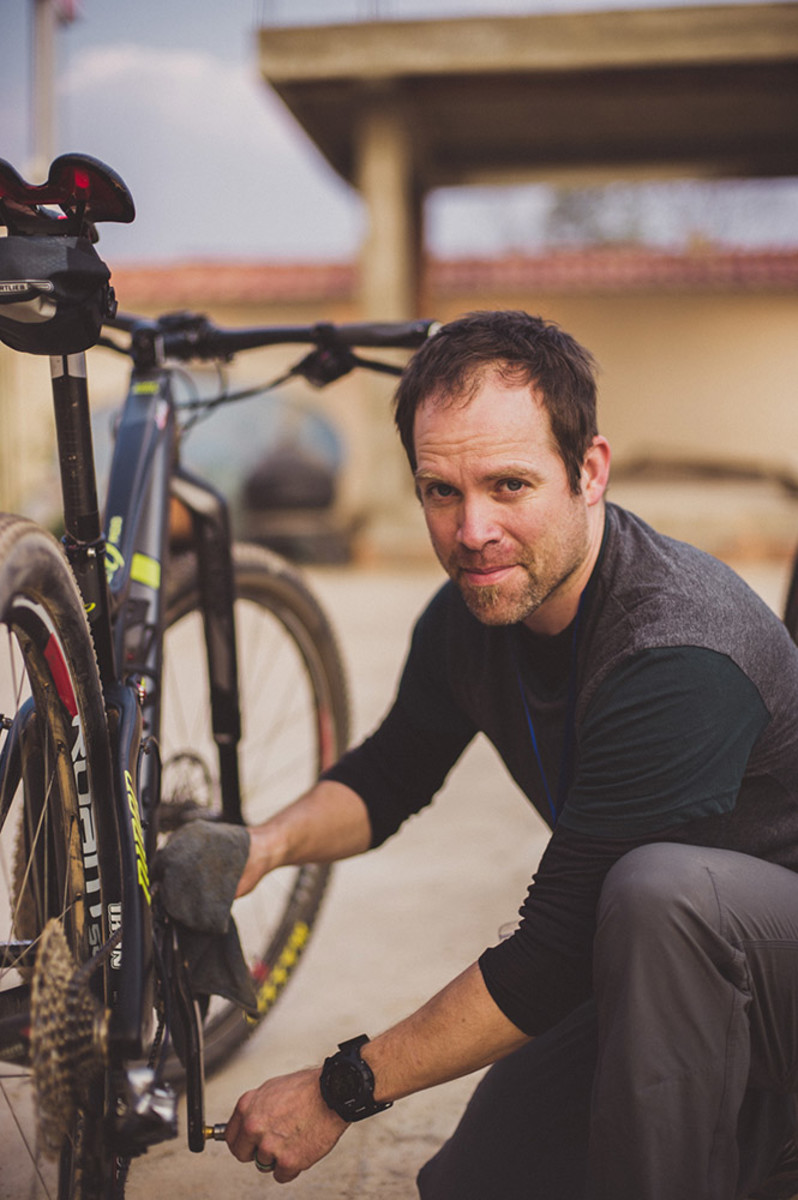
Jason Bauer, Rebecca's mechanic, during her ride along the Ho Chin Minh Trail in 2015.
Ho Chi Minh Trail
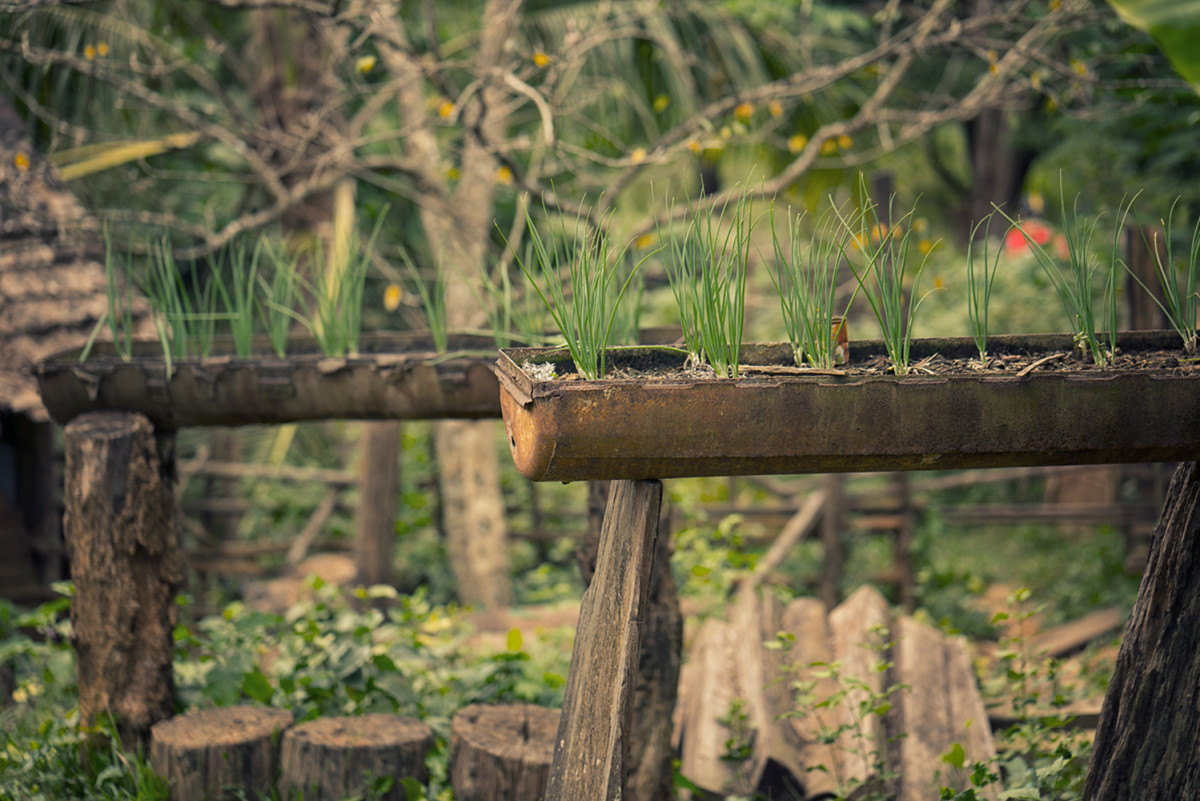
Cluster bomb casings (hundreds of cluster bombs would be in each) repurposed into planters for green onions. From the follow-up ride with friends in November 2016.
Ho Chi Minh Trail
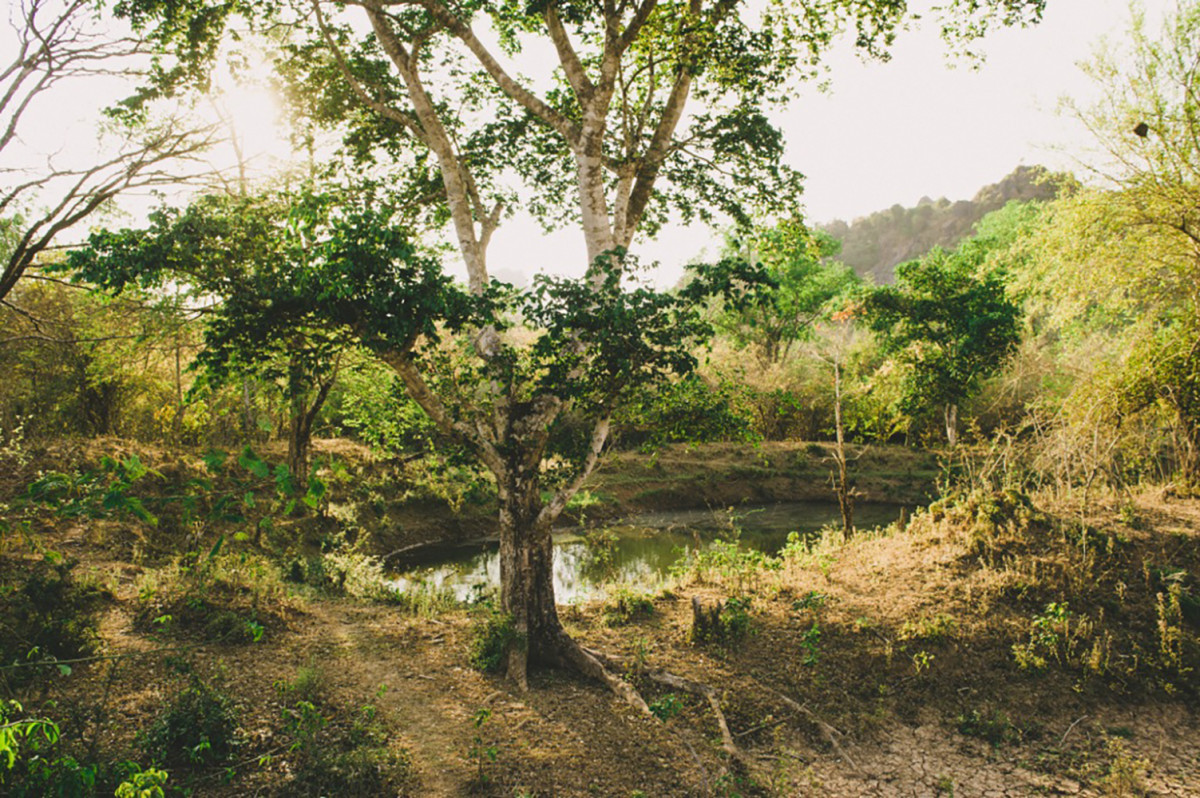
A bomb crater in Laos. From the ride along the Ho Chi Minh Trail in 2015.
Ho Chi Minh Trail
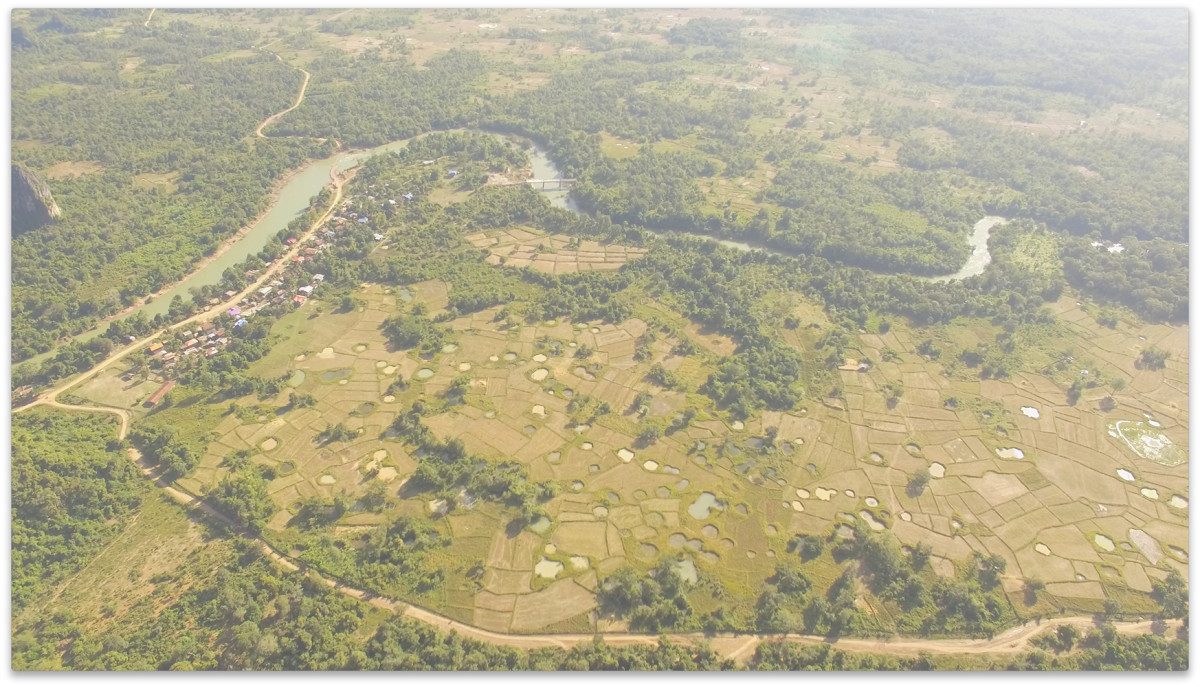
Drone shot of bomb craters in Laos. From the ride along the Ho Chin Minh Trail in 2015.
Ho Chi Minh Trail
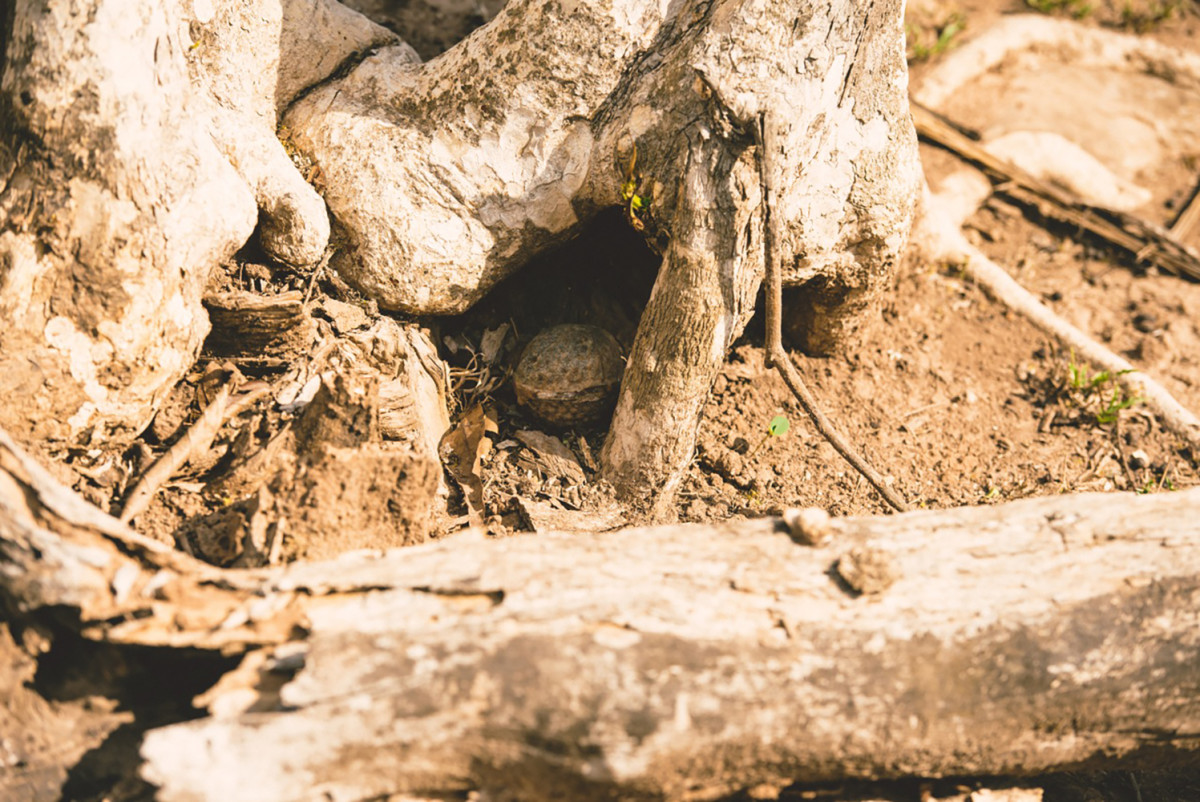
Cluster bomb hiding in tree roots in Laos. From the ride along the Ho Chin Minh Trail in 2015.
Stephen Rusch's funeral
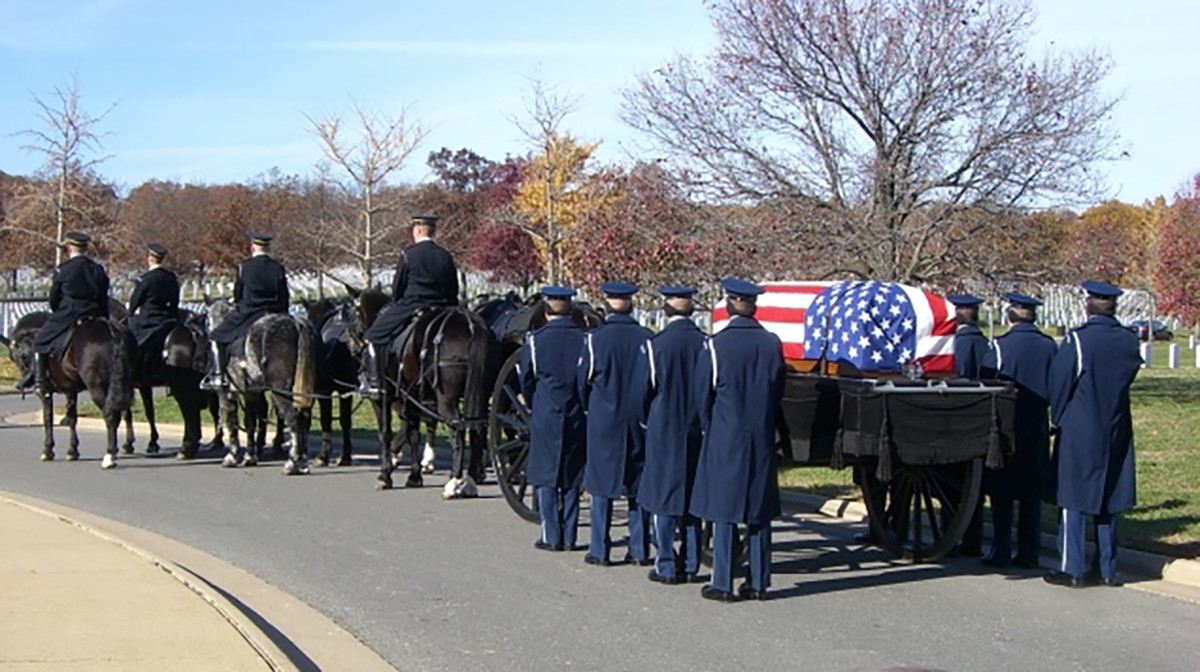
Stephen Rusch's funeral at Arlington.
Don Duvall
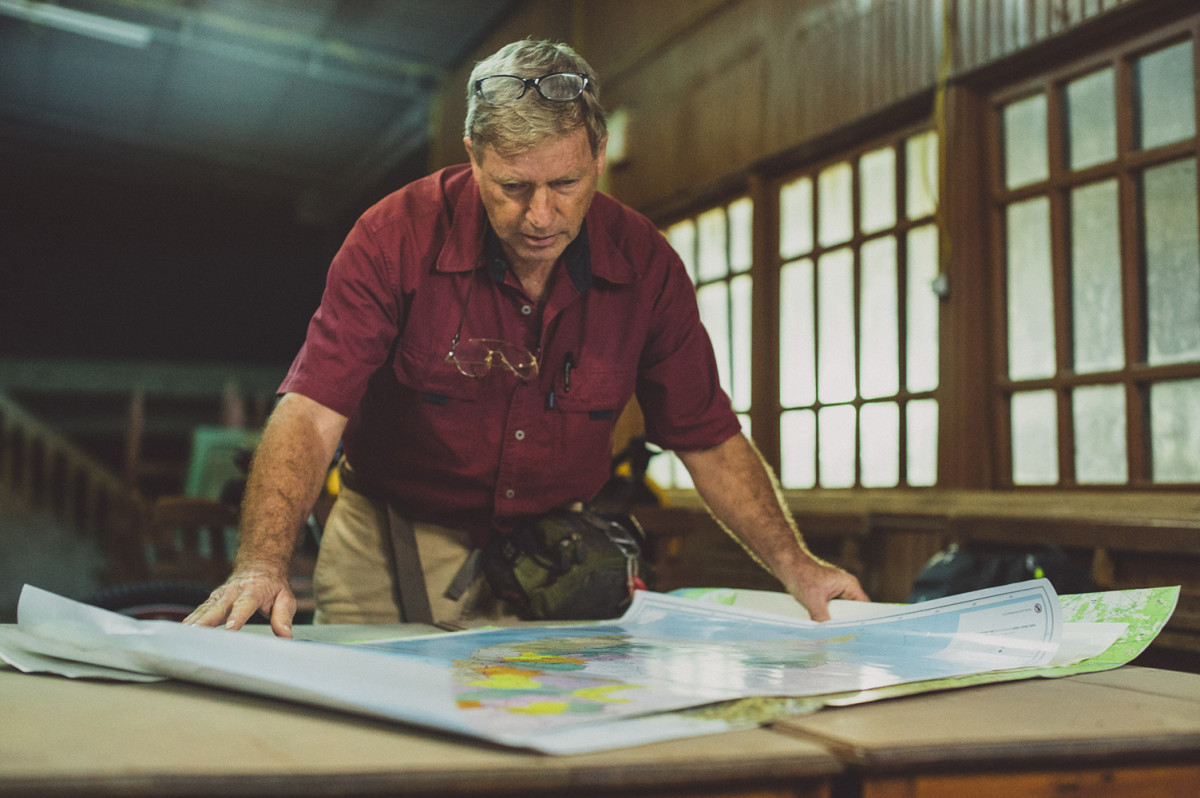
Don Duvall inspecting maps. From the ride along the Ho Chin Minh Trail in 2015.
Ho Chi Minh Trail
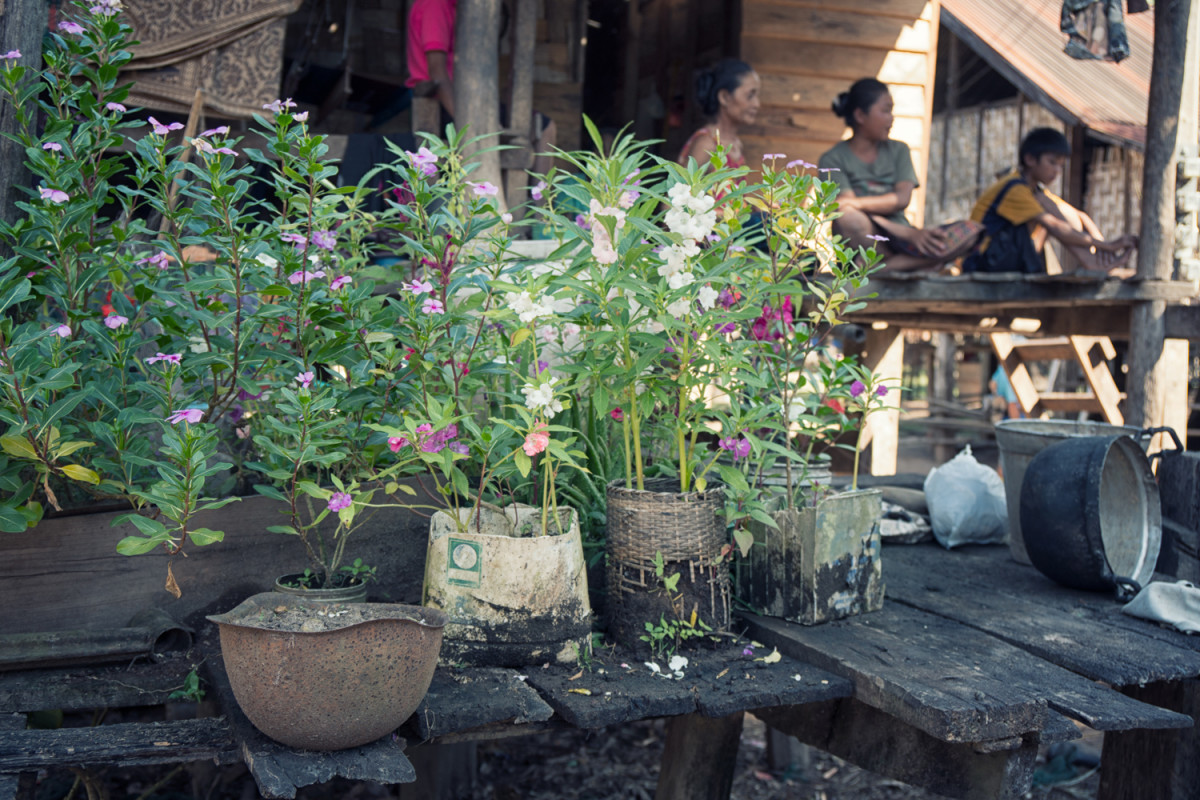
A soldiers helmet repurposed as a planter. From the follow-up ride with friends in November 2016.
Rebecca Rusch with family
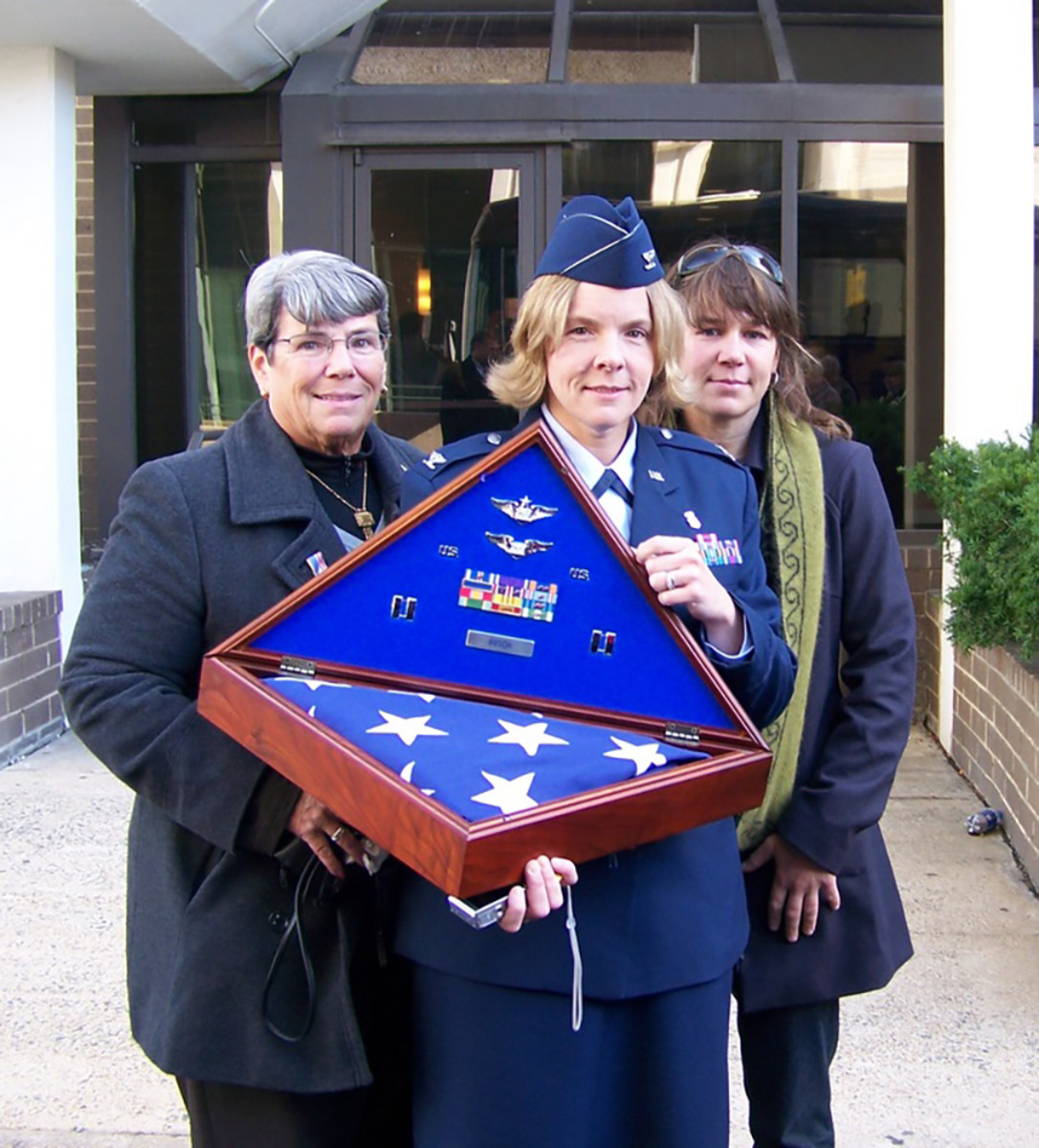
L-R Judy Rusch (mom), Sharon Rusch (sister), Rebecca Rusch with Stephen Rusch's flag. From the funeral at Arlington.
Ho Chi Minh Trail
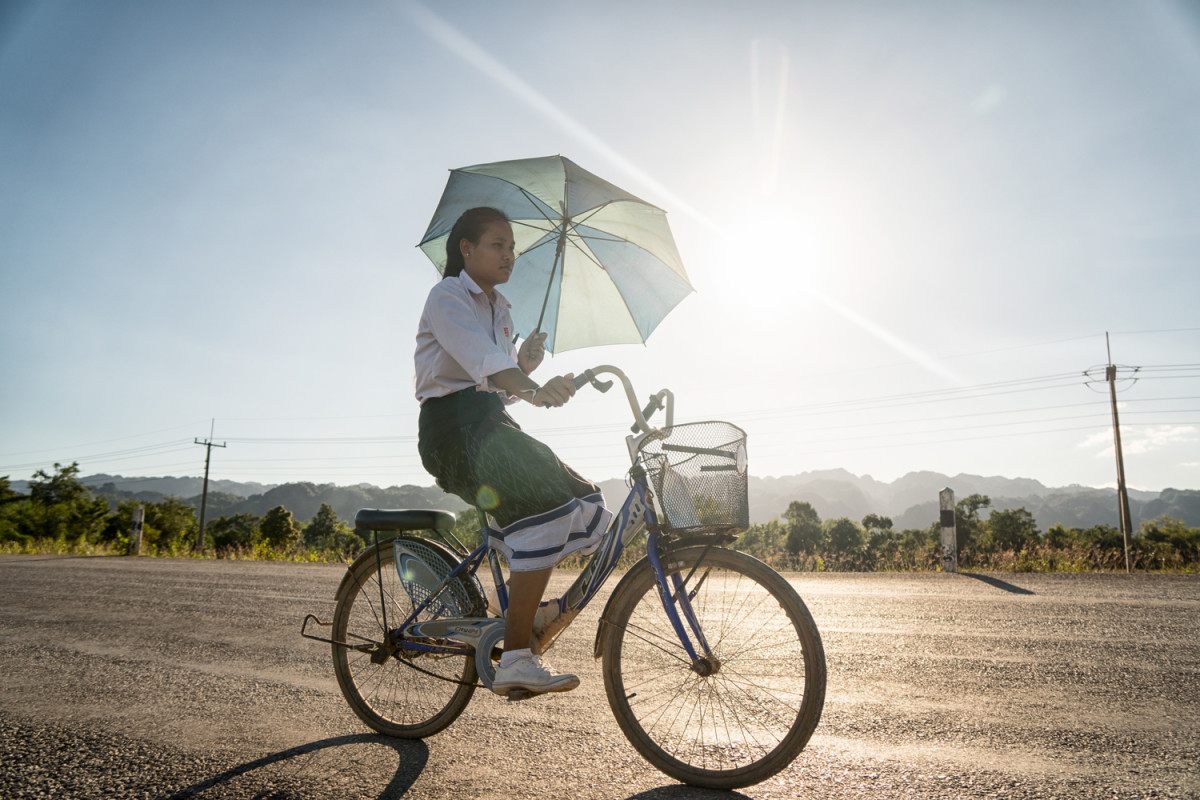
A schoolgirl cycling in Laos. From the follow-up ride with friends in November 2016.
Ho Chi Minh Trail
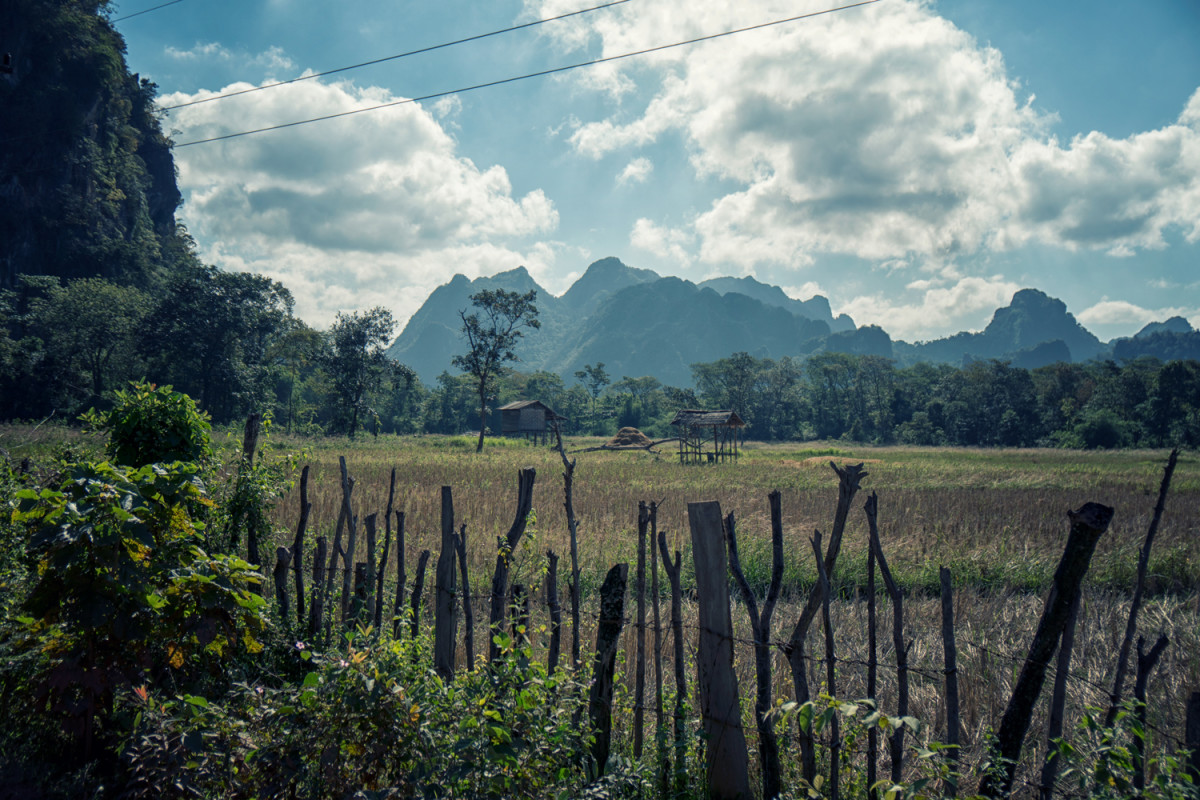
Scenery in central Laos. From the follow-up ride with friends in November 2016.
Ho Chi Minh Trail
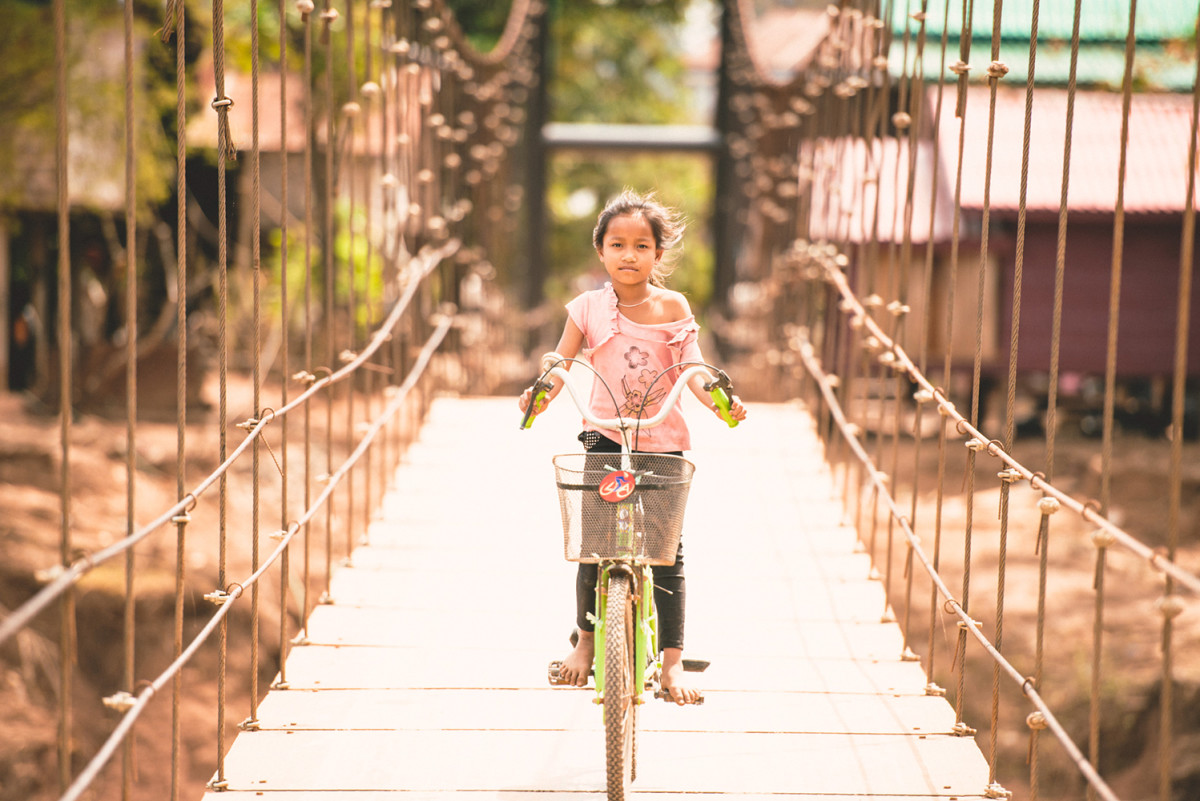
Laotian girl cycling across suspension bridge. Compare other photo of Rebecca/Huyen. From the ride along the Ho Chi Minh Trail in 2015.
Ho Chi Minh Trail
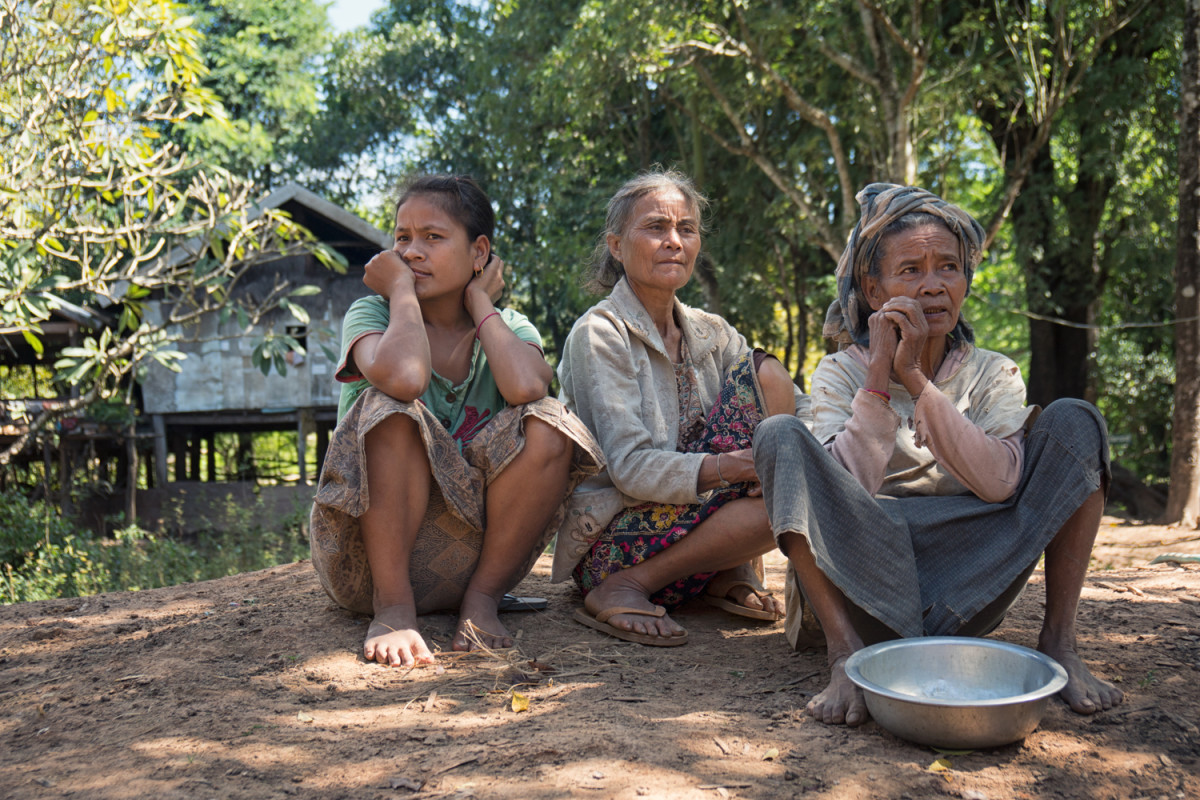
Laotian locals sitting. From the follow-up ride with friends in November 2016.
Ho Chi Minh Trail
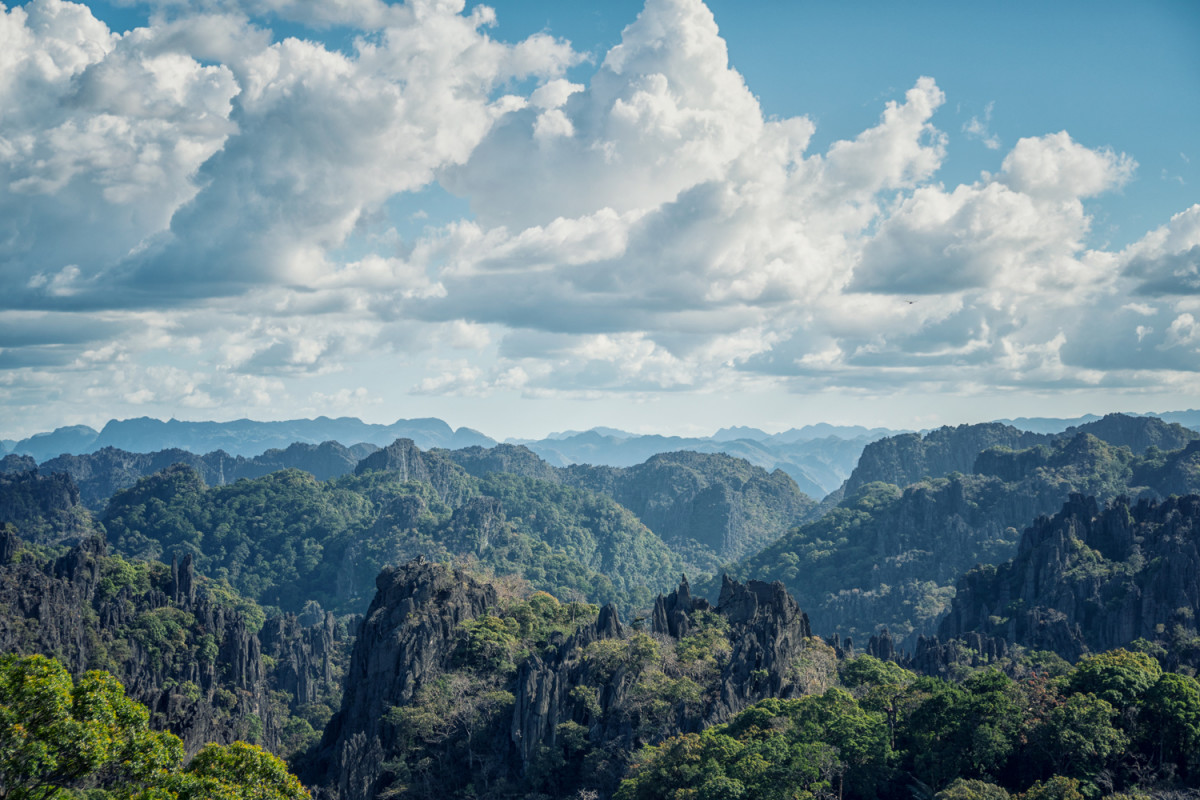
High-up view of mountains in Laos. From the follow-up ride with friends in November 2016.
Ho Chi Minh Trail
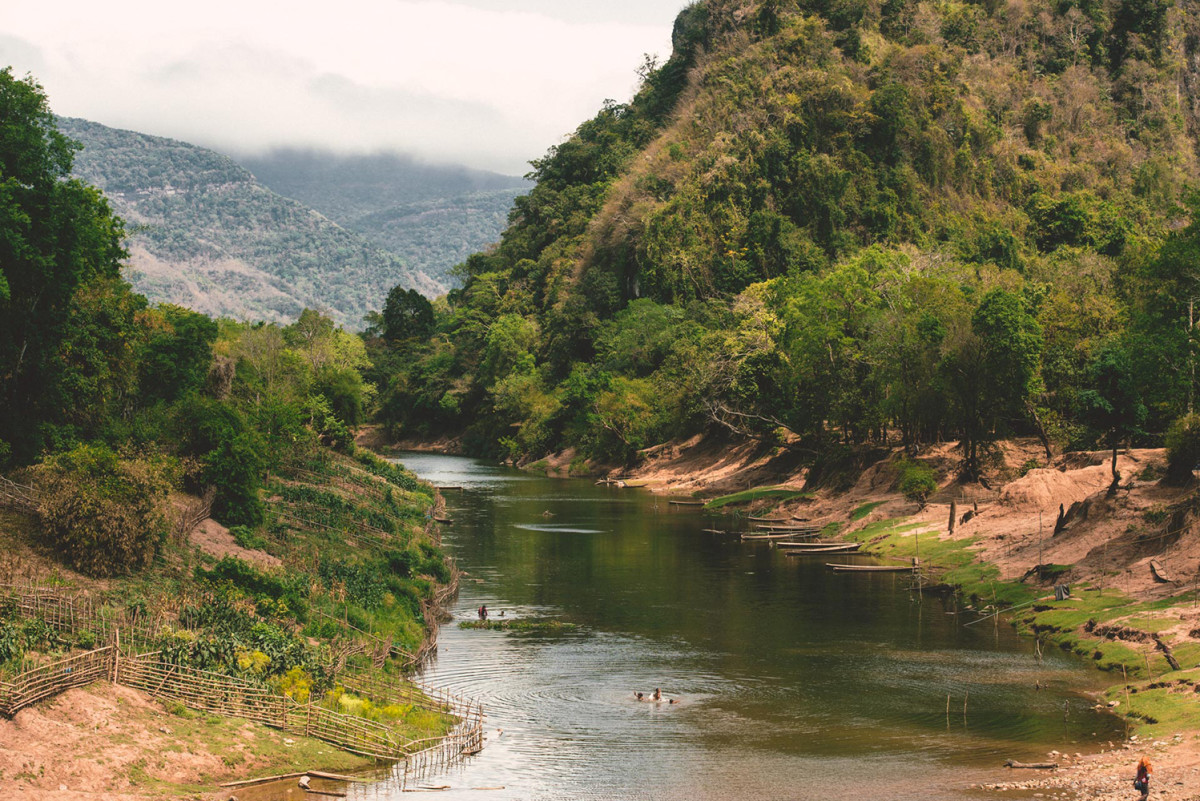
River scenery in Laos. From the ride along the Ho Chin Minh Trail in 2015.
Ho Chin Minh Trail

Letter Rebecca wrote to her father before visiting his crash site. From the ride along the Ho Chin Minh Trail in 2015.
Stephen Rusch
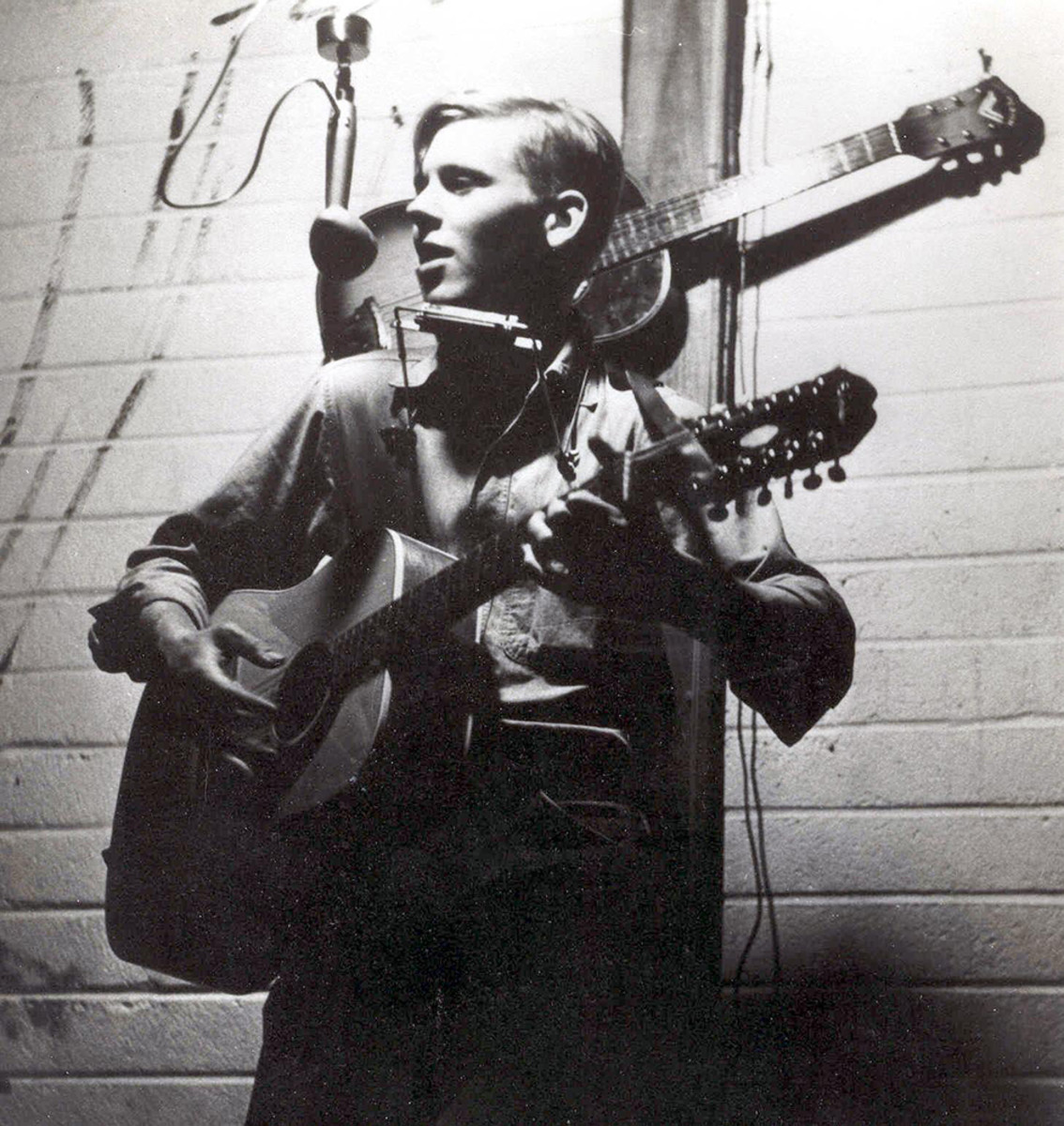
Stephen Rusch playing guitar, singing, and playing harmonica. Circa 1960s
Arlington National Cemetery
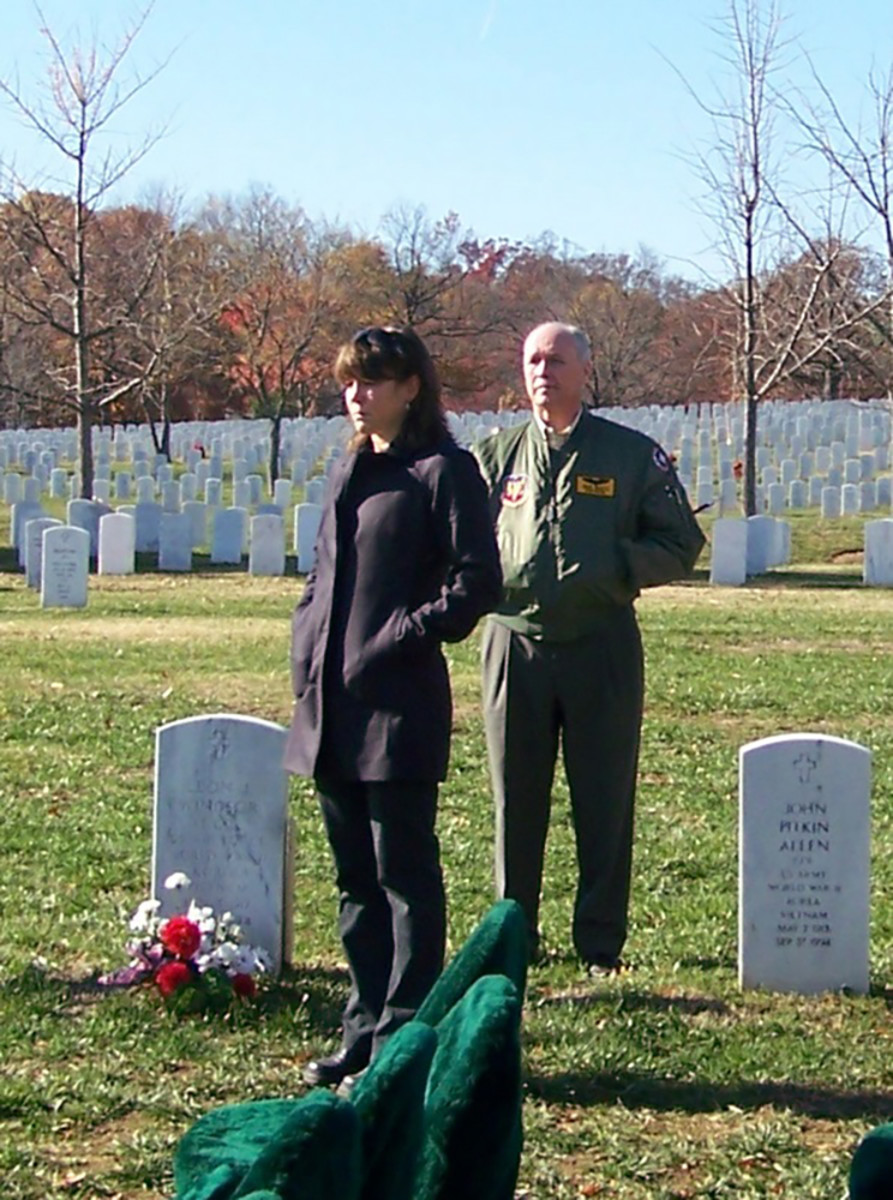
Rebecca at her father's grave. From the funeral in Arlington.
Rebecca Rusch
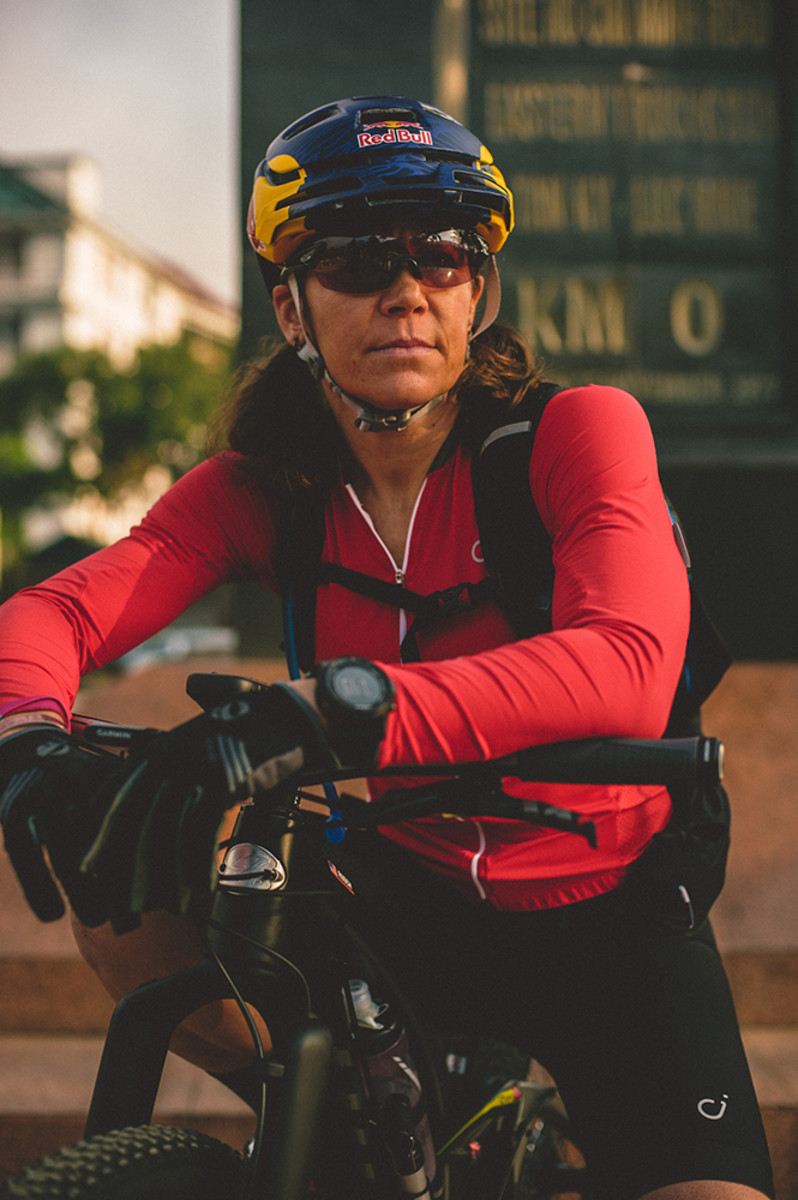
Rebecca at the start of the Ho Chi Minh Trail (see KM 0 in background). From the ride along the Ho Chin Minh Trail in 2015.
Rebecca Rusch
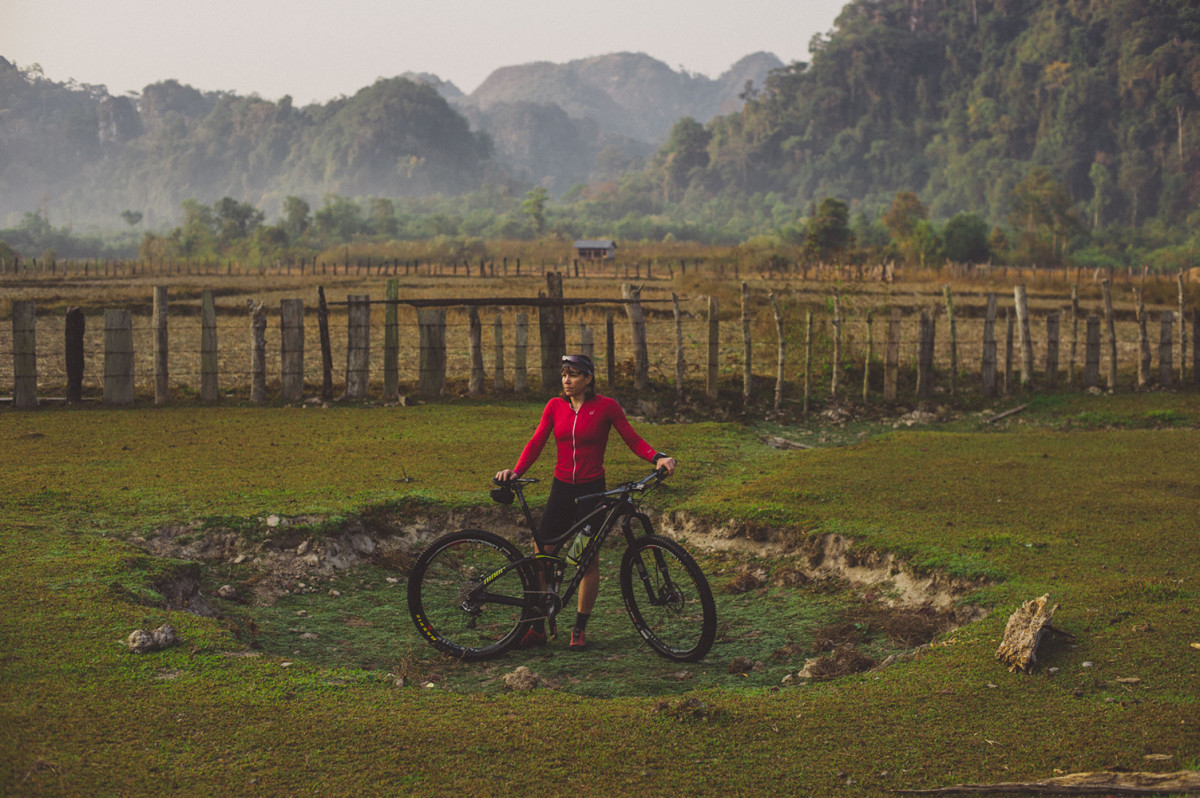
Rebecca standing with her bike in a bomb crater in Laos. From the ride along the Ho Chin Minh Trail in 2015.
Rebecca Rusch
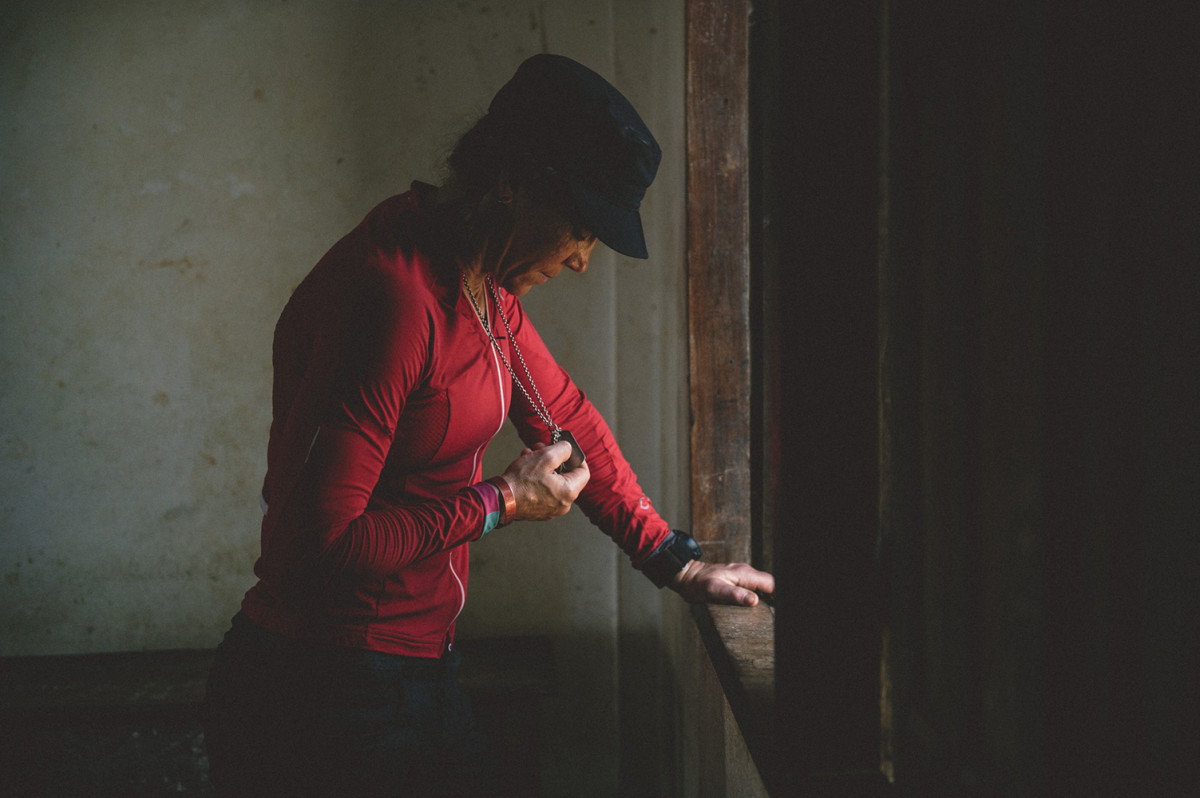
Rebecca holding her father's dog tags. From the ride along the Ho Chin Minh Trail in 2015.
Rebecca Rusch
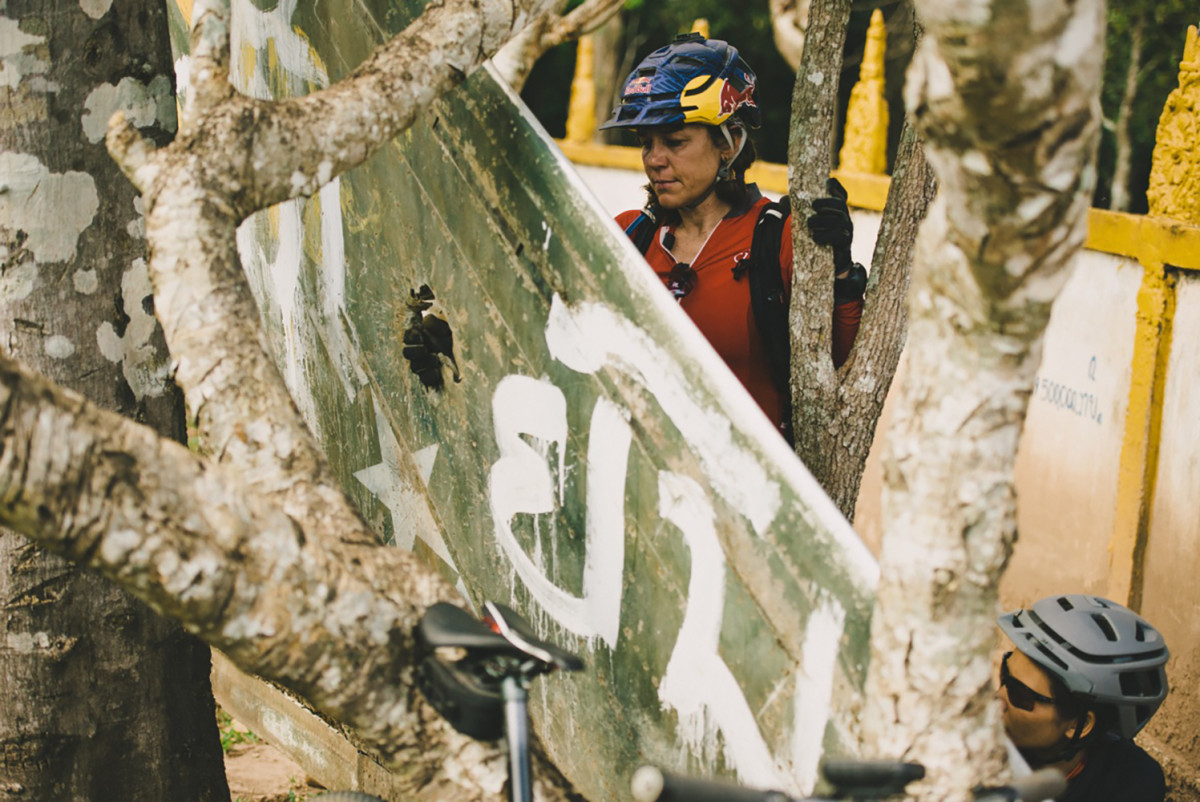
Rebecca looking at the wing of an F4 plane in the grounds of a temple in Laos. From the ride along the Ho Chin Minh Trail in 2015.
Rebecca Rusch
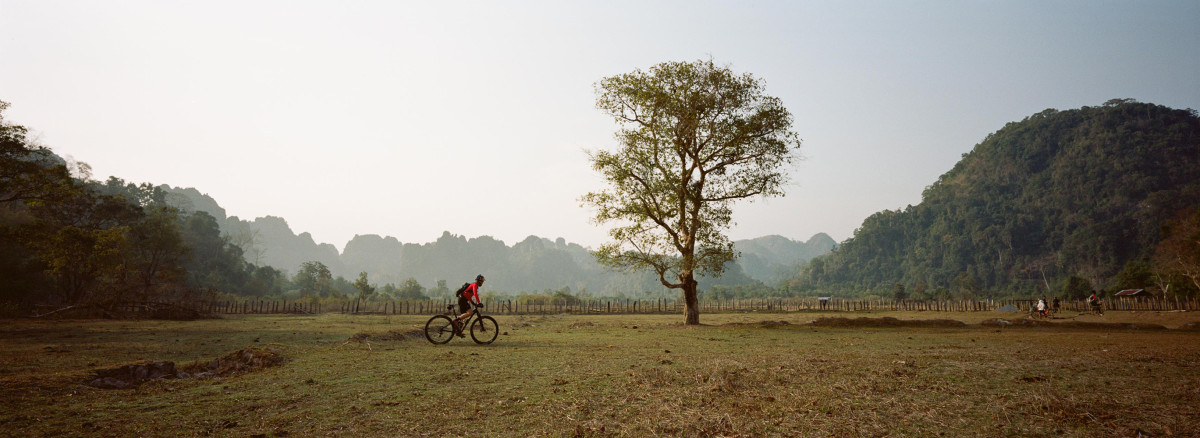
Rebecca cycling across a field in Laos. From the ride along the Ho Chin Minh Trail in 2015.
Rebecca Rusch and Nguyen Huyen
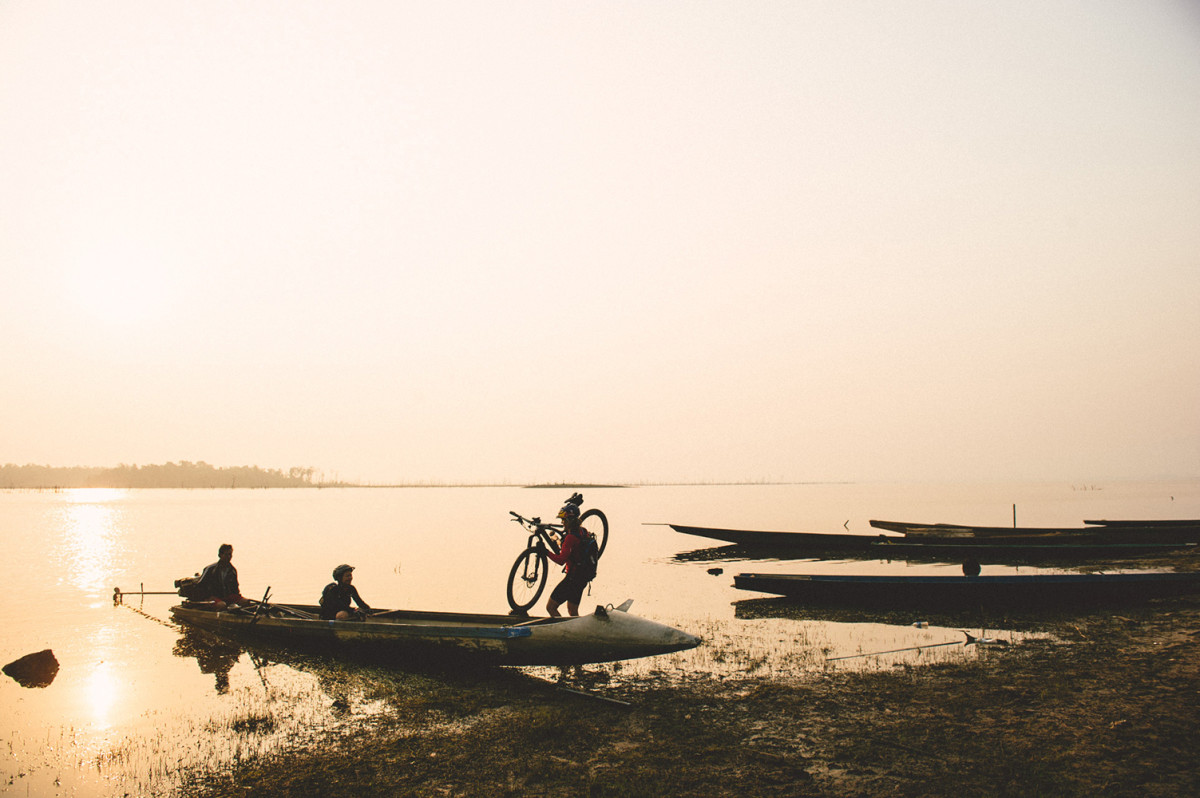
Rebecca and Nguyen Huyen boarding a boat made out of old military metal (maybe a plane¹s external fuel tank) to cross a lake in Laos. From the ride along the Ho Chin Minh Trail in 2015.
Rebecca Rusch and Nguyen Huyen
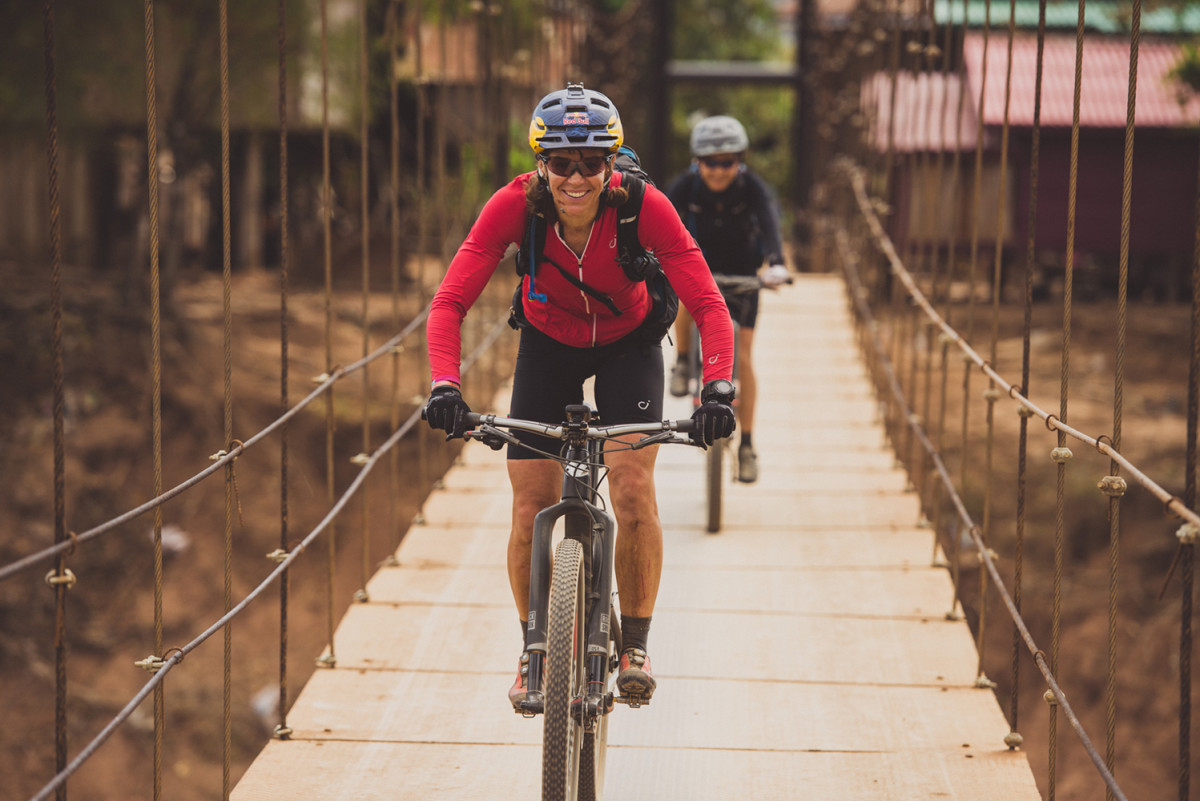
Rebecca and Huyen crossing a suspension bridge in Laos. From the ride along the Ho Chin Minh Trail in 2015.
Rebecca Rusch and Nguyen Huyen

Rebecca and Huyen paddling through a cave in Laos. From the ride along the Ho Chin Minh Trail in 2015.
Rebecca Rusch and Nguyen Huyen
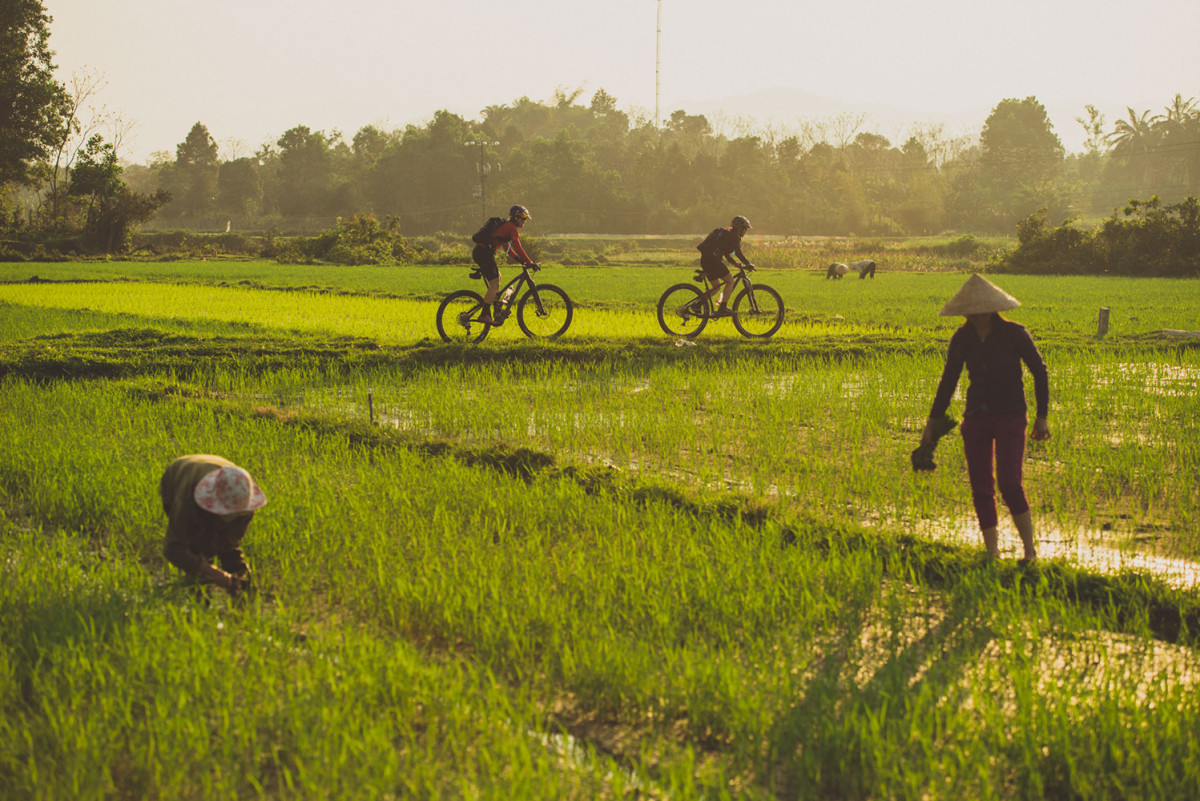
Rebecca and Huyen cycling across a paddy field. From the ride along the Ho Chin Minh Trail in 2015.
Rebecca Rusch and Nguyen Huyen
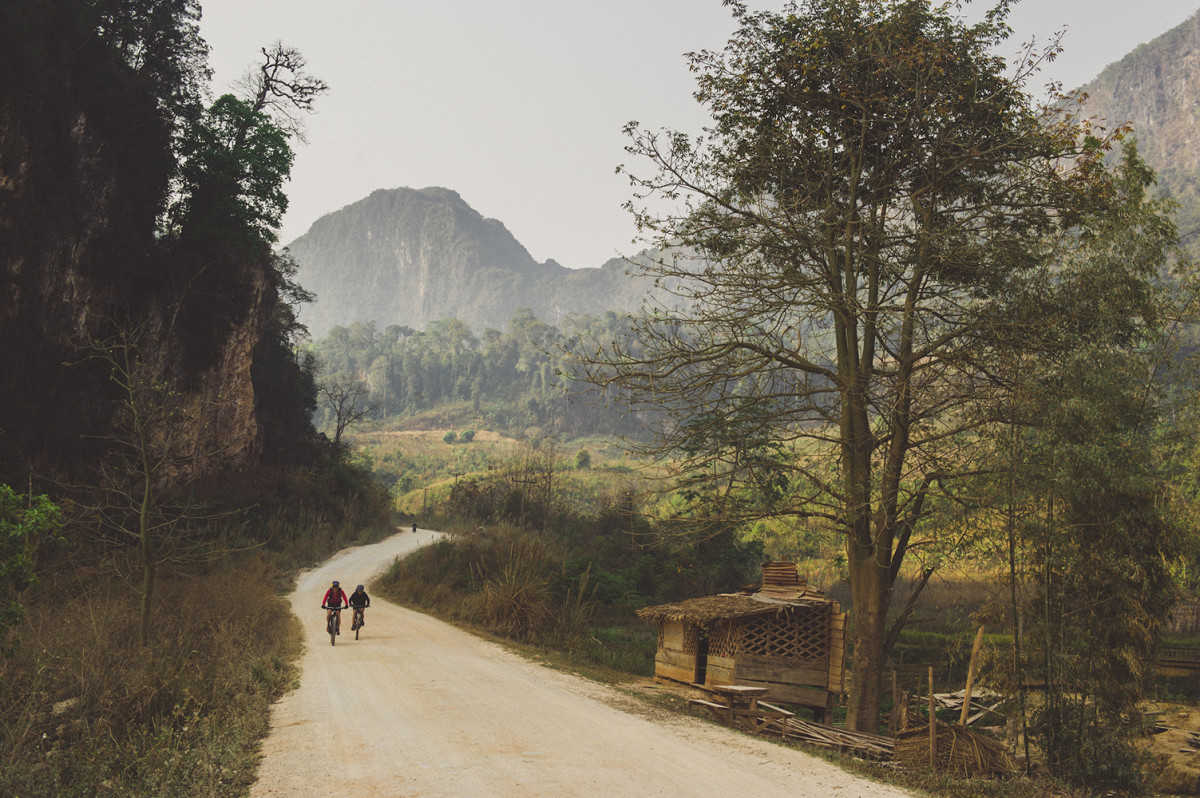
Rebecca and Huyen cycling down a road in Laos (scene from movie poster). From the ride along the Ho Chin Minh Trail in 2015.
Rebecca Rusch and Karoline Droege
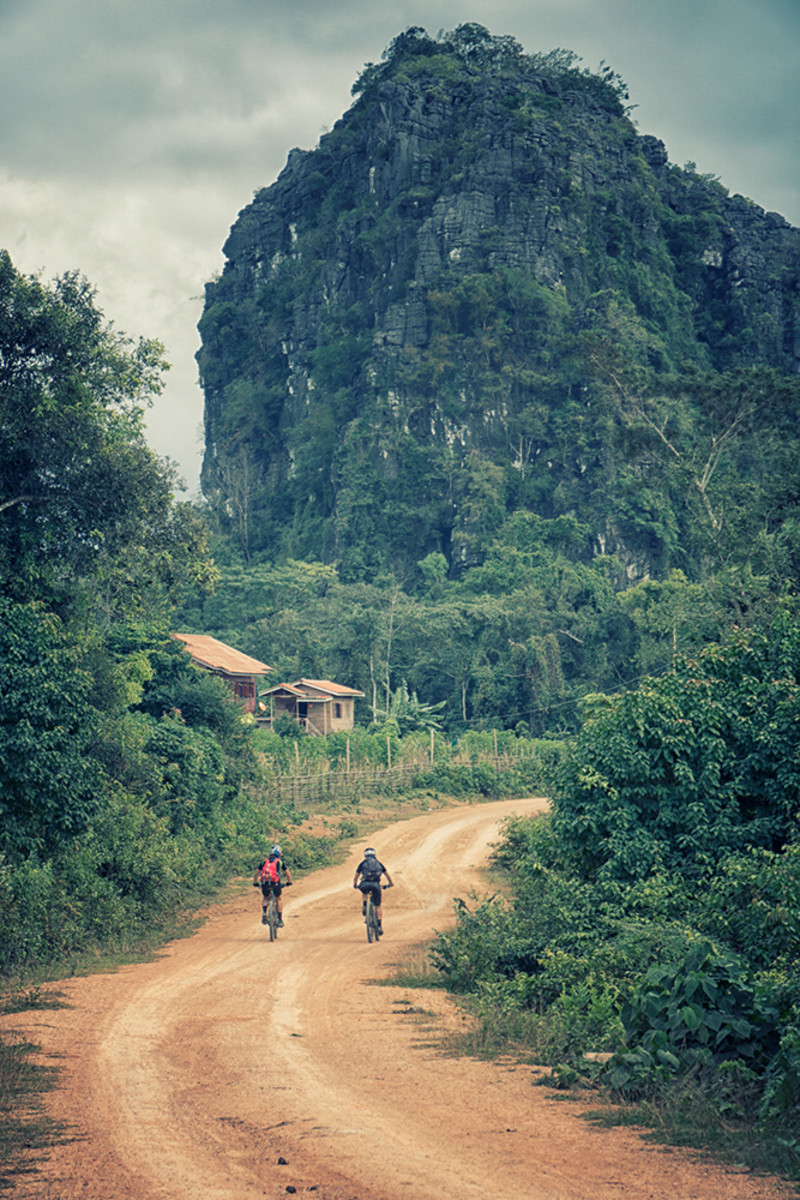
Rebecca and a friend from Ketchum, Karoline Droege, cycling along a road in Laos. From the follow-up ride with friends in November 2016.
Rebecca Rusch
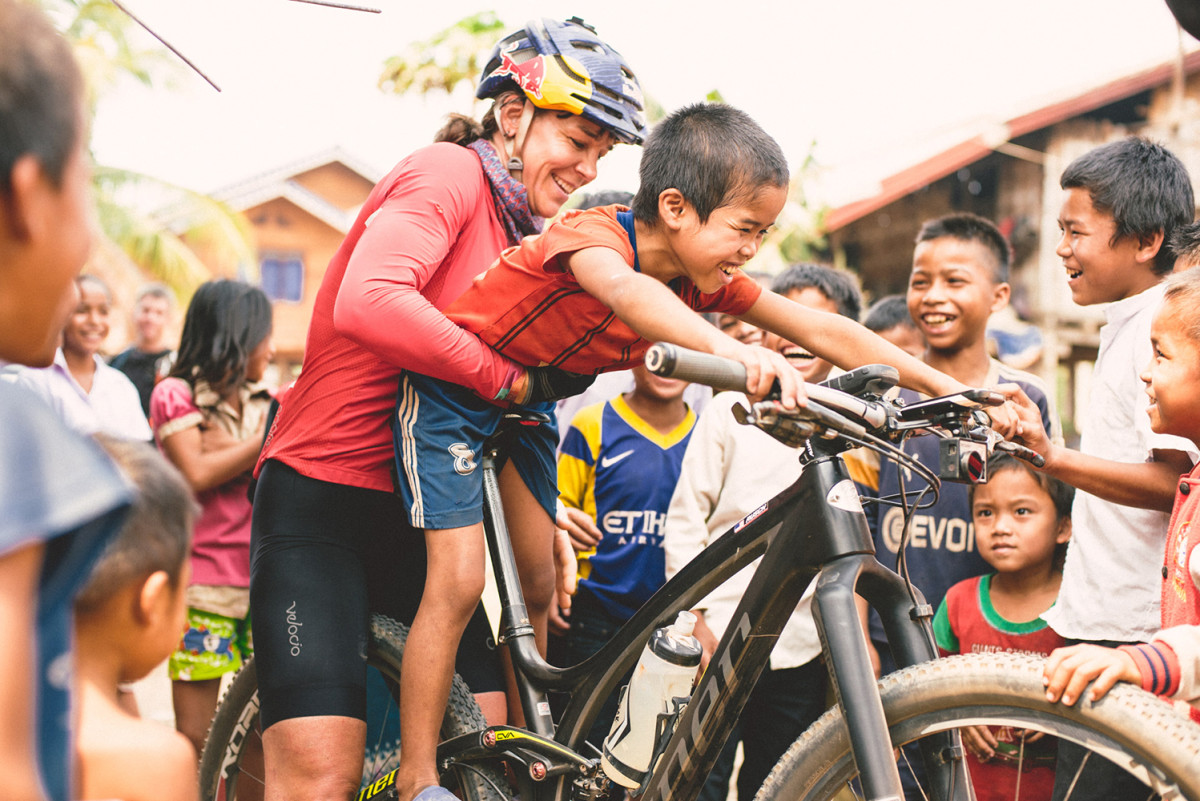
Rebecca teaching kids to ride her bike in a village. From the ride along the Ho Chin Minh Trail in 2015.
Rebecca Rusch and Greg Martin
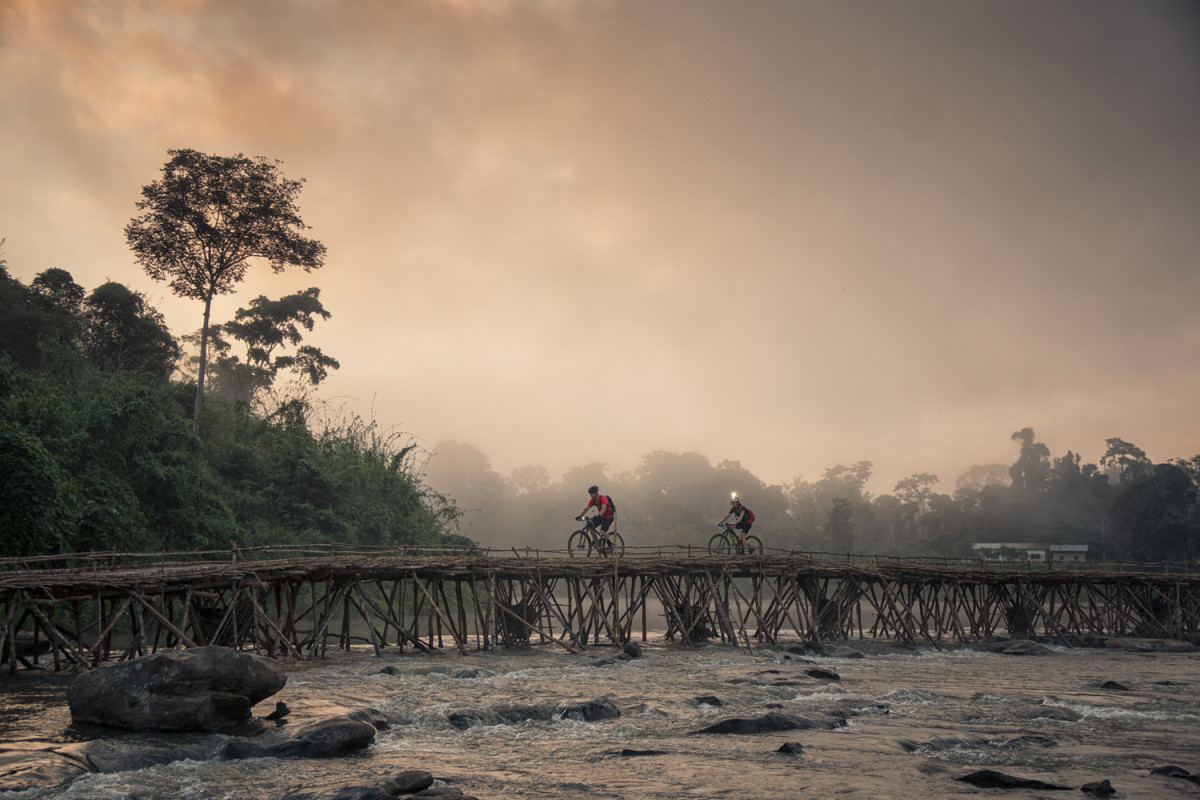
Rebecca and Greg Martin crossing a bamboo bridge in Laos. From the follow-up ride with friends in November 2016.
Rebecca Rusch and Greg Martin
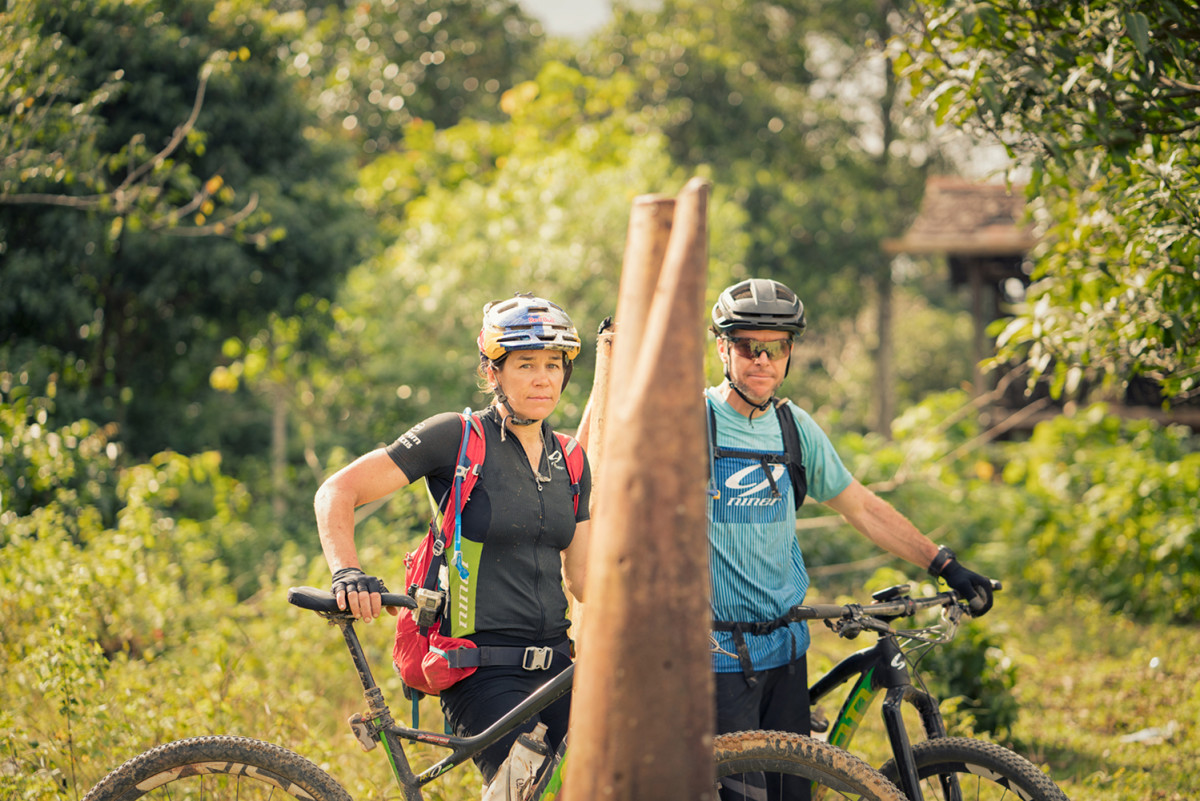
Rebecca and Greg Martin staring at old bomb casings (which had been reused at one point to form stilts for a house) in a village in Laos. From the follow-up ride with friends in November 2016.
Rebecca Rusch and Greg Martin
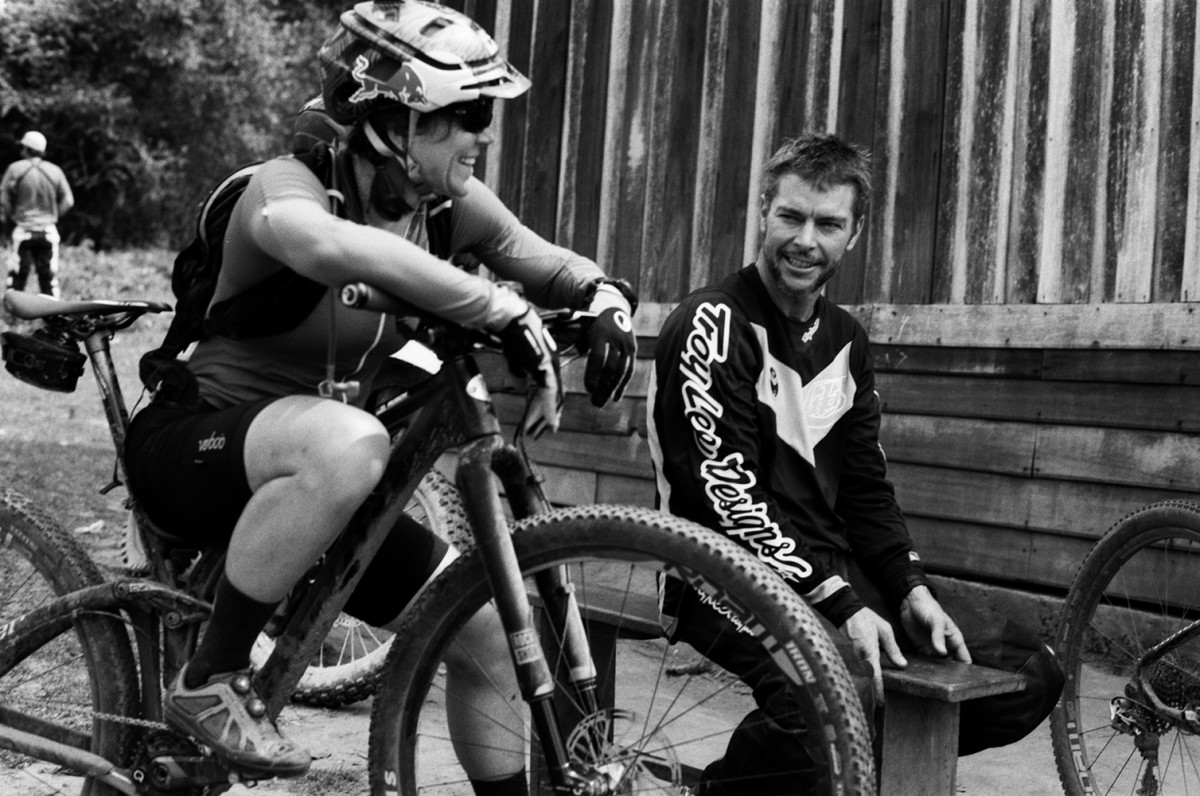
Rebecca and Martin chatting. From the ride along the Ho Chin Minh Trail in 2015.
Rebecca Rusch
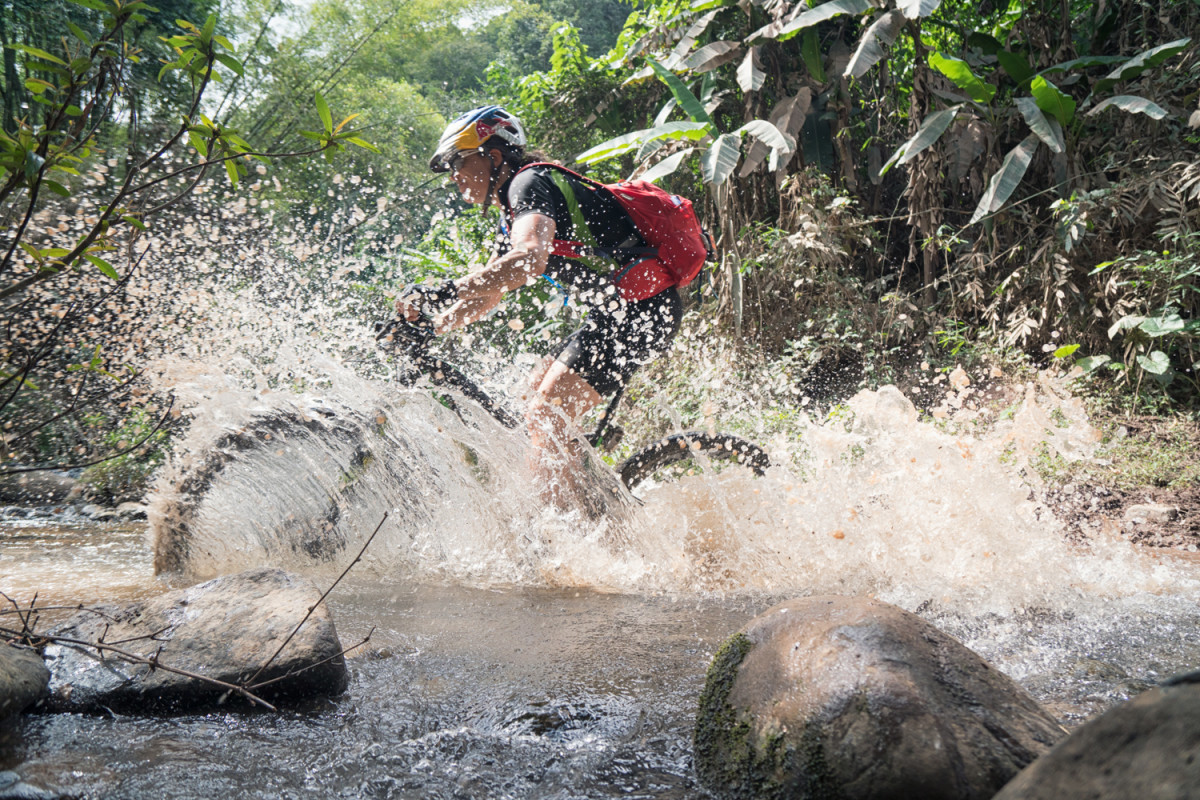
Rebecca crossing through a stream. From the follow-up ride with friends in November 2016.
Rebecca Rusch
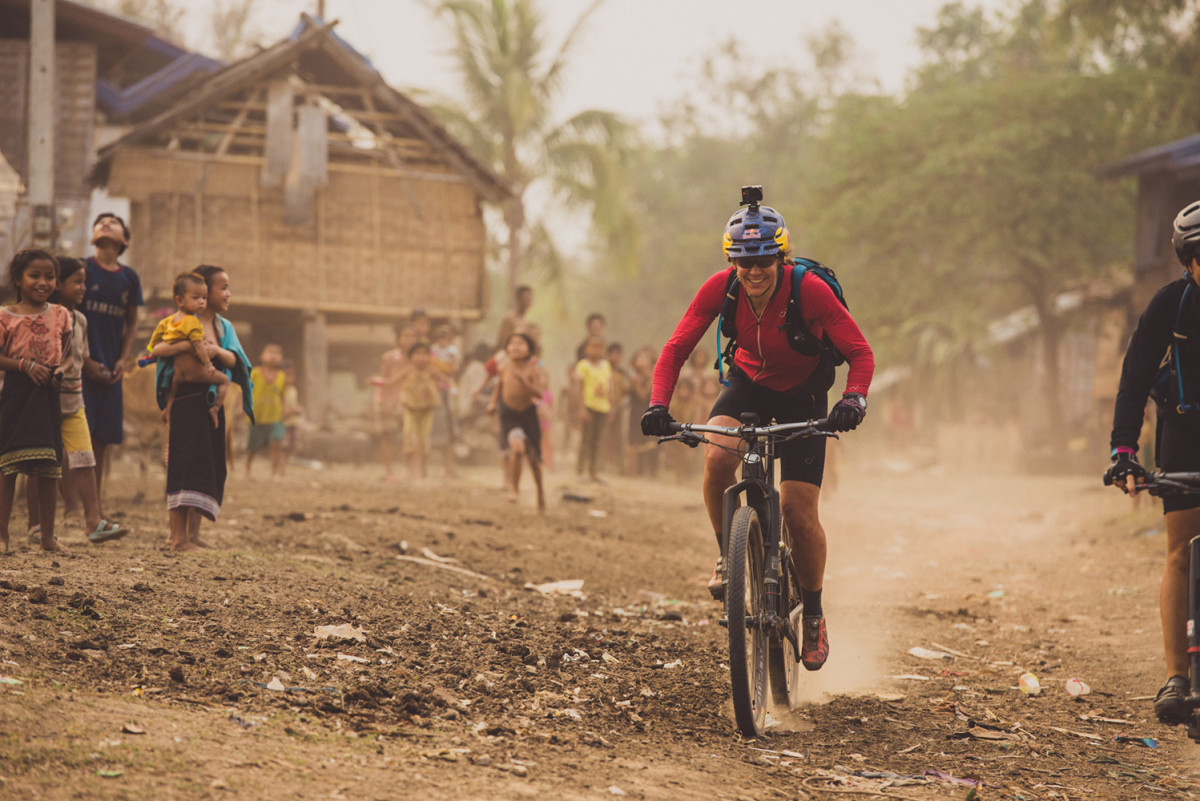
Rebecca riding through a village. From the ride along the Ho Chin Minh Trail in 2015.
Rebecca Rusch
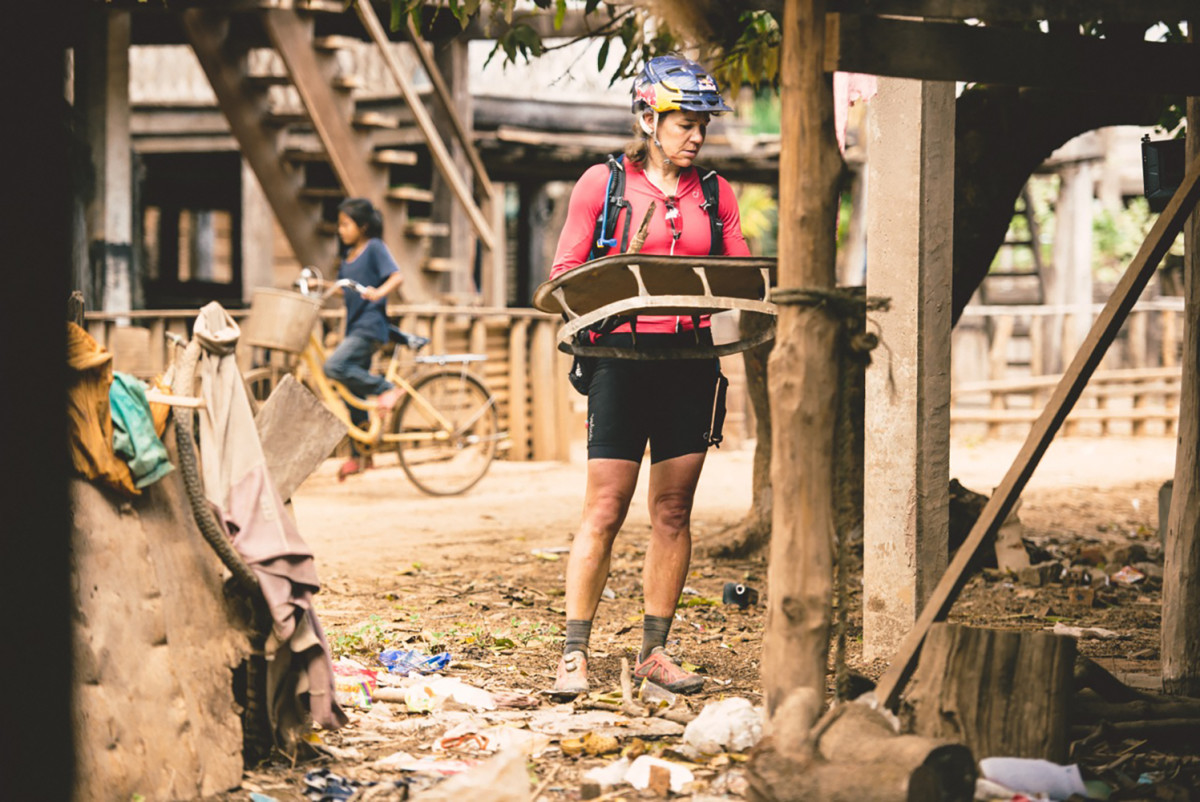
Rebecca looking at war junk stashed under a house. From the ride along the Ho Chin Minh Trail in 2015.
Sharon Rusch
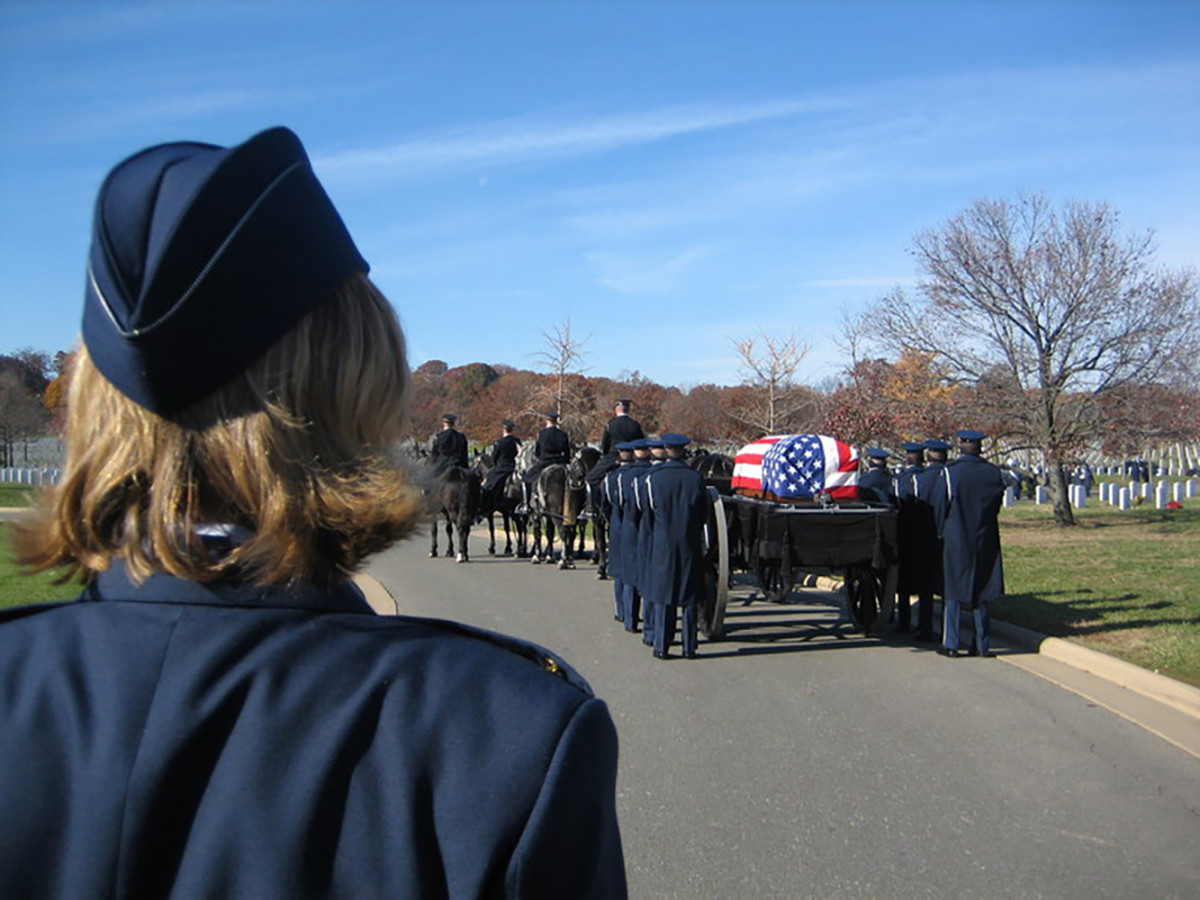
Sharon walking behind her father¹s casket in Arlington.
Stephen Rusch's truck
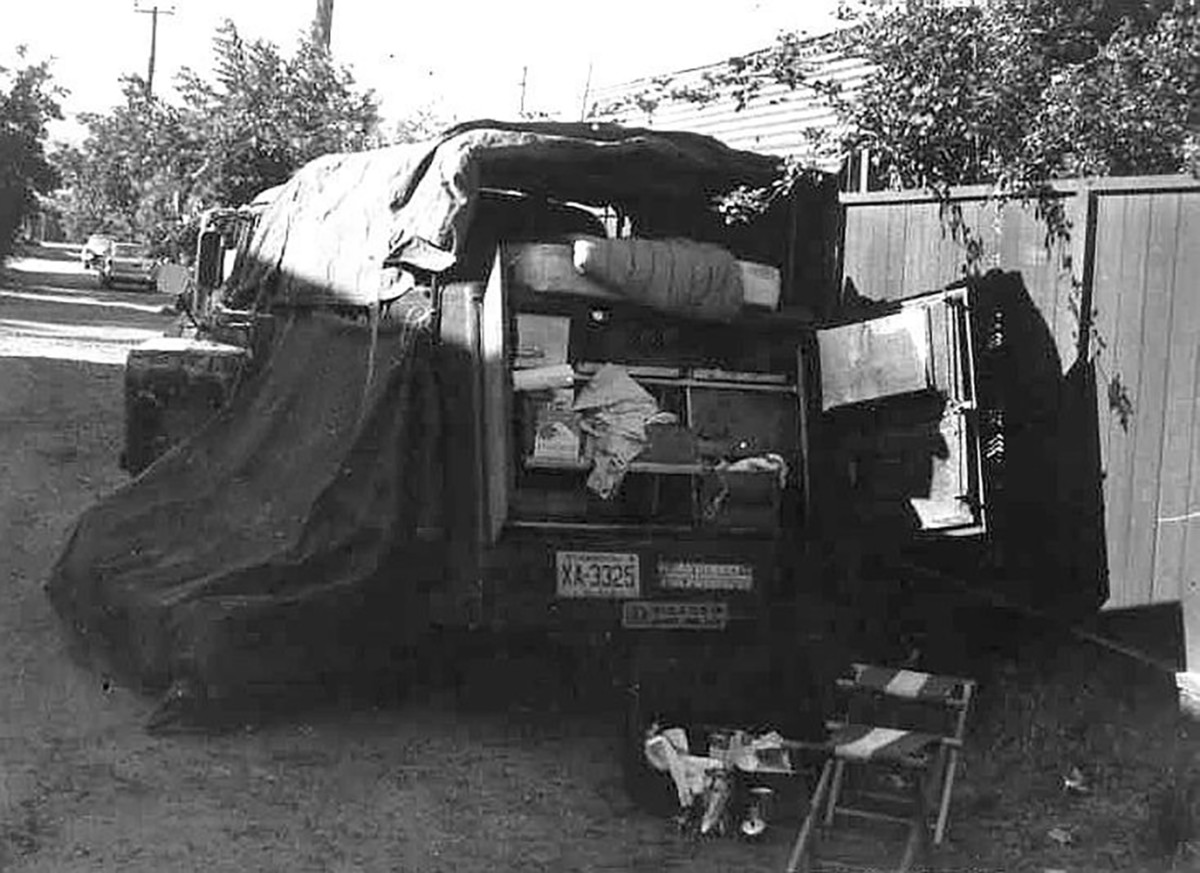
Stephen Rusch's truck that he drove across the country in. Summer 1964.
Stephen Rusch
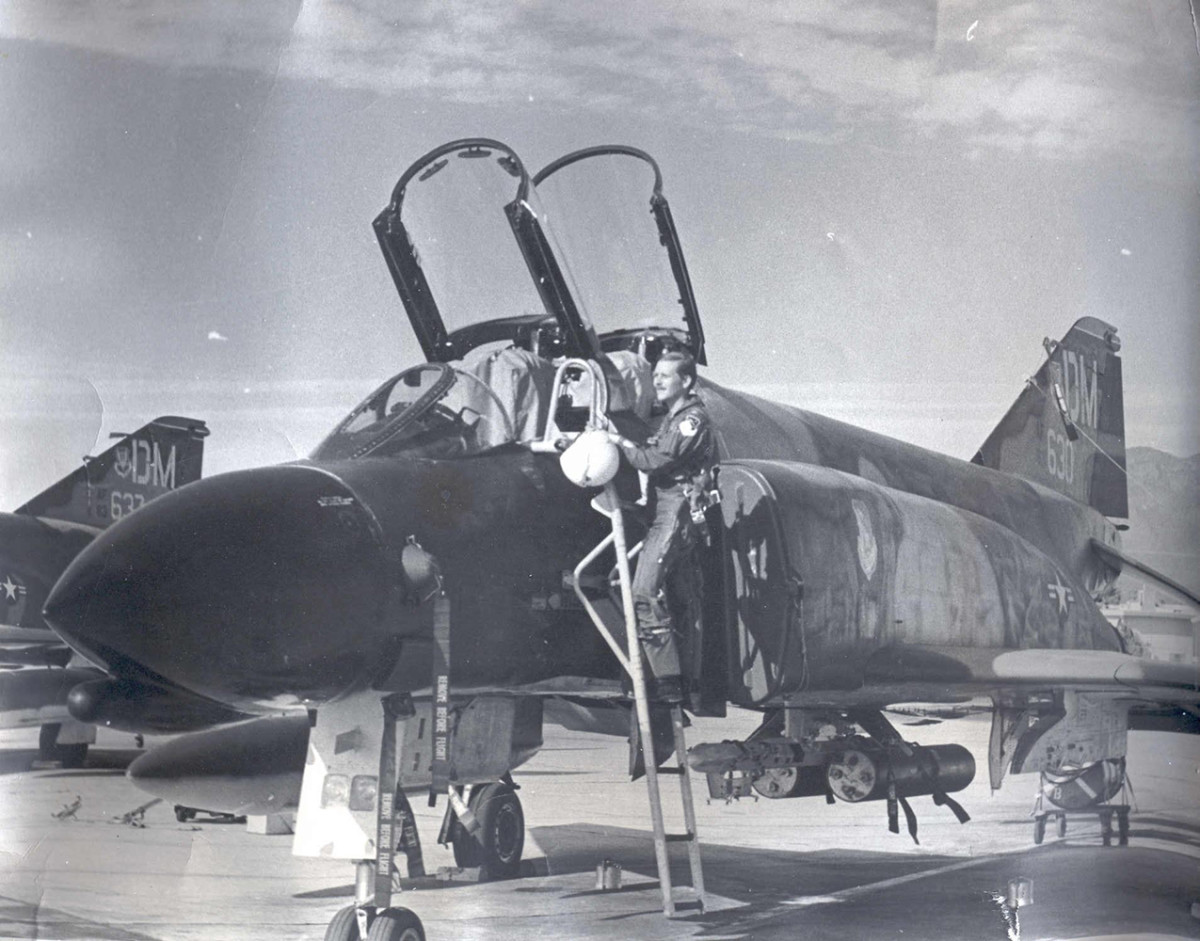
Stephen Rusch board an F4. He was a weapon¹s systems operator (sitting in the back seat).
On Mar. 7, 1972, U.S. Air Force pilot Carter Howell and weapon’s systems officer Stephen Rusch were flying an early morning hunter-killer mission over Southern Laos in their fighter-bomber, Gunfighter 61. James Schnabel and Don Rakestraw flew beside them in Gunfighter 60. Below, beneath the jungle foliage, the Tuong Son Strategic Road System stretched across the landscape, carrying men, machines and munitions from North Vietnam to support the Viet Cong army in its war against South Vietnamese and U.S. forces.
The NSA’s official history of the war calls this network “one of the great achievements of Military Engineering in the 20th century.” More than 12,000 miles of roads, footpaths and waterways connected Hanoi in the North with rebels in the South. Americans dubbed it the Ho Chi Minh Trail after the North’s leader. Because most of the network was in Laos and Cambodia (which were then known as the Kingdom of Laos and the Khmer Republic, respectively), the U.S. could not send in ground troops to block the supply route without officially dragging those countries into the conflict. So instead, the U.S. launched a five-year operation of covert bombardment. Shattered by bombing, and washed out by rainstorms, the trails were constantly shifting, rebuilt almost daily. But despite more than 200,000 bombing runs, the supply route was never broken.
Gunfighter 60 dropped down to the deck, buzzing across the treetops in search of targets. Spotting a couple of North Vietnamese Army trucks, Schnabel and Rakestraw launched smoke rockets to mark the vehicles’ location, then pulled back up to a safe altitude of 15,000 feet. The rockets didn’t light up, but Howell and Rusch had seen where they’d hit the ground and rolled in to attack anyway. Their first bombs missed, so they circled back for a second pass.
Schnabel and Rakestraw lost sight of Gunfighter 61 in the haze below. Muzzle flashes lit up the jungle, tracer bullets from anti-aircraft guns scouring the humid air. They saw cluster bombs explode. Then there was another explosion. Gunfighter 61 dropped and crashed through the canopy, cutting a long gorge in the red earth below before coming to rest beside a stream in the hills west of the village of Ta Oy. No parachutes opened. The radio went silent.
A phone rang in Clarksville, Ind., where Rebecca’s mom Judy was working that day. Two men in Air Force uniforms showed up and told her Steve’s plane had been shot down, but that they knew nothing definitive other than that. She and Steve had divorced a couple of years before, but had stayed close. For three or four days Judy kept the news to herself. She didn’t want to terrify Rebecca and her older sister, Sharon. Is he hurt, or is he missing, or is he captured, Judy wondered. Or is he dead?
Rebecca was just three-and-a-half years old then. She doesn’t remember her dad. Steve disappeared just days before Sharon’s sixth birthday, her birthday gifts from him arrived the day after Judy got the news that he was missing.
Apart from a handful of photographs, almost every memento Judy kept of Steve was stored away out of sight. Judy says she tried to bring up the subject with her daughters, but “they didn’t want to talk about him.” When Sharon left home for college, her mom tried to give her some of her dad’s military records. “Talking about it somehow made it seem like that was final, and so we just never really did,” Sharon says. Rebecca felt embarrassed and uncomfortable when people tried to be sympathetic. Everyone seemed to expect her to feel the empty space of her dad’s absence more than she did. “It was just this disjointed story that wasn’t personal really for me,” she says. Rebecca never even knew when her father’s birthday was—July 23, 1943.
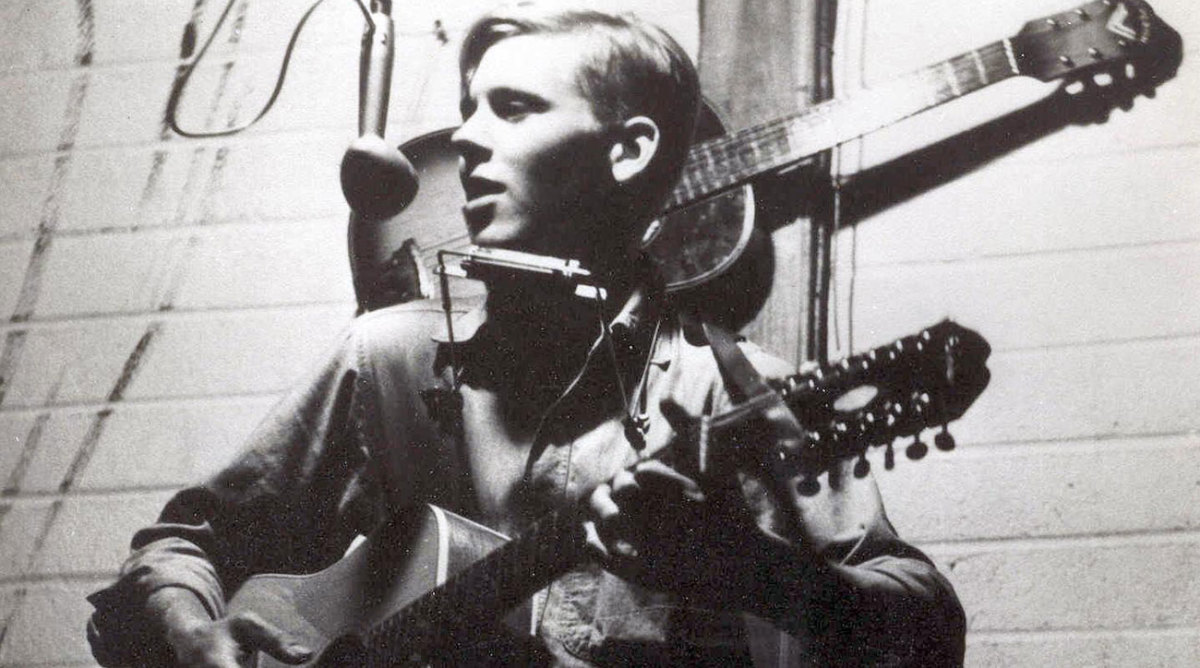
Before the war, before his low draft number had compelled him to sign up for the Air Force rather than risk getting dragged into the infantry, Steve had been a wandering soul. The summer after his junior year at Drew University in Madison, N.J., he bought an old telephone truck and drove west to Ventura, Calif., with his friend Stuart Nordheimer. They each brought along a couple of six- and 12-string guitars, and Steve brought a banjo, too. They planned to play music to help pay for food and gas while following along in the footsteps of heroes like folksinger Woody Guthrie and writer John Steinbeck.
When Rebecca finally did ask her mother about her father, while researching the story for Blood Road, she came across electronic echoes of him. Super 8 family movies and recordings of him singing. Her eyes welled up with tears. She was mad that her mom had never shown her any of this before, then felt guilty for never asking about her dad. In one recording, he plays folksinger Tom Paxton’s “I Can’t Help But Wonder Where I’m Bound.” ‘Wanderin’ through this land. Just doing the best I can,’ Steve sung half a century ago. ‘Tryin’ to find what I was meant to do.’
She found letters her father had written to his family. “I’m not looking forward to this next year,” Steve wrote in a letter from Da Nang Air Base in Vietnam in fall 1971. “I love the flying and the airplane but I don’t like the job. Regardless of any opinions I have of this war or any other, it is hard to think about the killing that I will be doing. I try to rationalize and say that it has to be done, but I guess I can’t see any reason why.” Twice a day, every day, Steve dropped three tons of bombs or napalm onto Southeast Asia’s already scorched earth. By the time the U.S. withdrew from the war in 1973, 58,220 Americans had been killed in action, and another 2,626 were missing—among them Rusch and Howell.
***
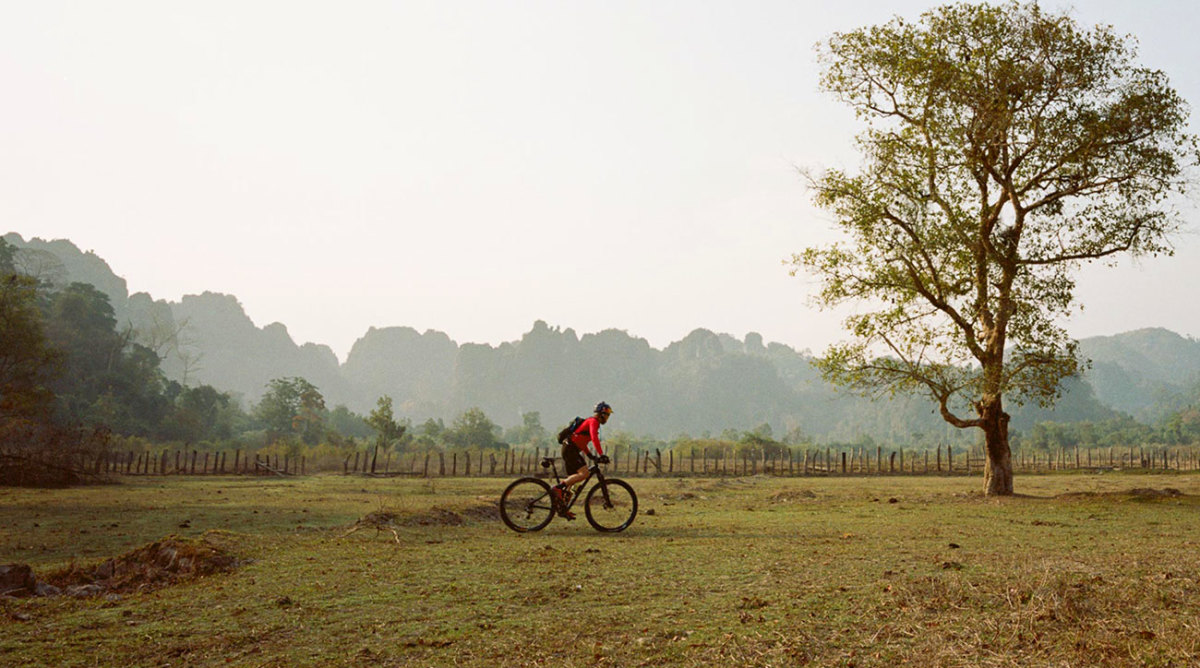
Rebecca’s athletic career started in high school, first cross-country and then track at Downers Grove (Ill.) North High in a distant suburb of Chicago. She studied marketing at the University of Illinois, and after graduation in 1994 she started working in the marketing department at The Sporting Club, an exclusive health club in Chicago. But before she had settled into a comfortable office job she discovered the club’s 100-foot climbing wall. Rock climbing took her to Southern California where she stumbled across the fledgling adventure-racing scene. In ’96 she quit her job and loaded everything she owned into Betty, her ’75 Ford Bronco. For a decade she lived on the road, driving many of the same back roads her dad had in 1964, recording the first female ascent of the Bermuda Dunes route up El Capitan in Yosemite, racing with the U.S. whitewater rafting team, and leading Team Montrail to victory at the 2003 Raid Gauloises adventure-racing world championships in Kyrgyzstan.
In 2002 she made her way to Vietnam, for that year’s Raid Gauloises. The thick jungle crawled with strange creatures, and in the constant damp Team Montrail struggled with trench foot, infected bug bites, and dysentery. Rusch and her team led for most of the race, but were eventually hunted down and overtaken. For the first time since high school, Rusch thought about her dad.
Was this what it was like for him? she wondered.
***
Steve’s dog tags turned up in 2001. A local handed them and a bone fragment over to U.S. military personnel stationed in Laos, part of a global Dept. of Defense force tasked with finding missing U.S. servicemen and servicewomen from past conflicts.
The bone fragment turned out not to be Steve’s, but excavations of the crash site in 2002 and ’03 found two of his teeth. Those were packed inside a case and flown in a Hercules C-130 plane from Wattay International Airport near Vientiane, Laos, to Hickham Air Force Base in Hawaii. Over the next four years, the teeth were sorted and identified in a macabre building full of boxed human body parts. Then they were flown to Dover Air Force Base in Delaware, escorted by an Air Force periodontist—Steve’s oldest daughter and Rebecca’s sister, Col. Sharon Bannister.
His sparse remains were formally laid to rest at a ceremony at Arlington National Cemetery on Nov. 30, 2007. “It was good to have him where he belonged,” Judy says. “He didn’t belong on the side of a hill in [Laos]. He belonged in Arlington.” STEPHEN ARTHUR RUSCH, CAPT USAF the marble headstone reads, one of countless identical grave markers stretching into the distance. PURPLE HEART, it reads.
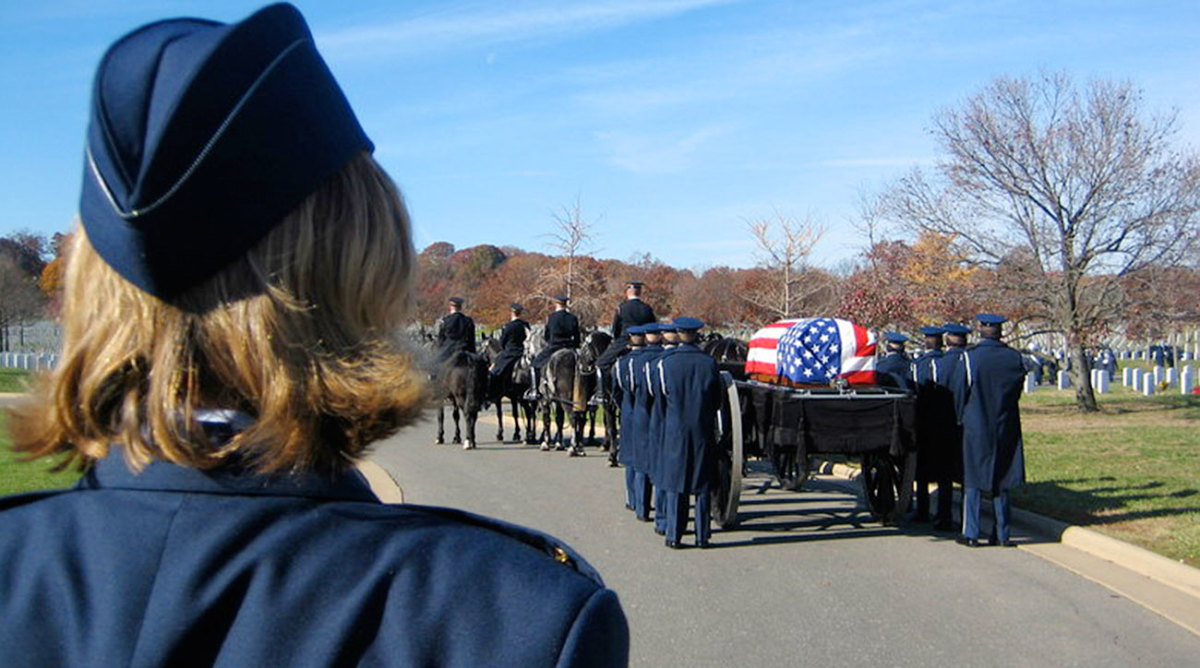
Rebecca considered boycotting the ceremony. The Air Force took my dad, and now they’re going to spend all of this money making this huge ceremony for a couple of teeth, she fumed. She eventually went because she didn’t want to fight with her mother and sister—her feelings toward the military had always been an unspoken issue between them. Her dad was buried with full military honors. Four Air Force jets roared across the sky, then one peeled off in the missing man formation. Rebecca gritted her teeth and did her best to play along. We went to a war that nobody wanted to go to, and now they’re going to say they’re sorry, she thought to herself. Thirty years later.
Only when she looked up and saw the community of surviving vets who had showed up to honor her dad did her resistance begin to soften. They rode in on Harley-Davidson bikes, wearing Air Force jackets. Some of them had served with her dad, many others hadn’t. Later that day, they went to the place where Steve's name is engraved on the Vietnam Veterans Memorial in DC. There were flowers and letters to him left at the foot of the wall.
Knowing Steve’s fate and going through that day at Arlington together brought Rebecca closer to her mother and sister. The three had always been more similar than they liked to admit, each breaking barriers in male-dominated fields. Judy balanced being a single mother with a career as an IT executive in the retail industry, Sharon is a senior officer in the Air Force, and Rebecca is a pro athlete. Talking about dad is no longer taboo, even if reliving the memories of 1972 has been harder for Judy and Sharon. “It’s like re-breaking a leg,” Rebecca says. “We’ve got to re-break it so it can heal right.”
Free spirited adventure racer Rebecca had never understood her sister’s decision to join the military, and until after that day at Arlington, she had never been to any of her sister’s promotions or changes of command. What if nobody signed up, Rebecca would argue, then there’d be no wars. Sharon would explain that regardless of any personal feelings she might have toward politicians and orders from above, she had a duty to her fellow servicemen and servicewomen, and to the American people. She signed up for three years straight out of college in 1992, and has already stayed for 25. And of course, serving has connected her to Steve. “You were mom’s favorite,” Sharon told Rebecca. “I was dad’s.”
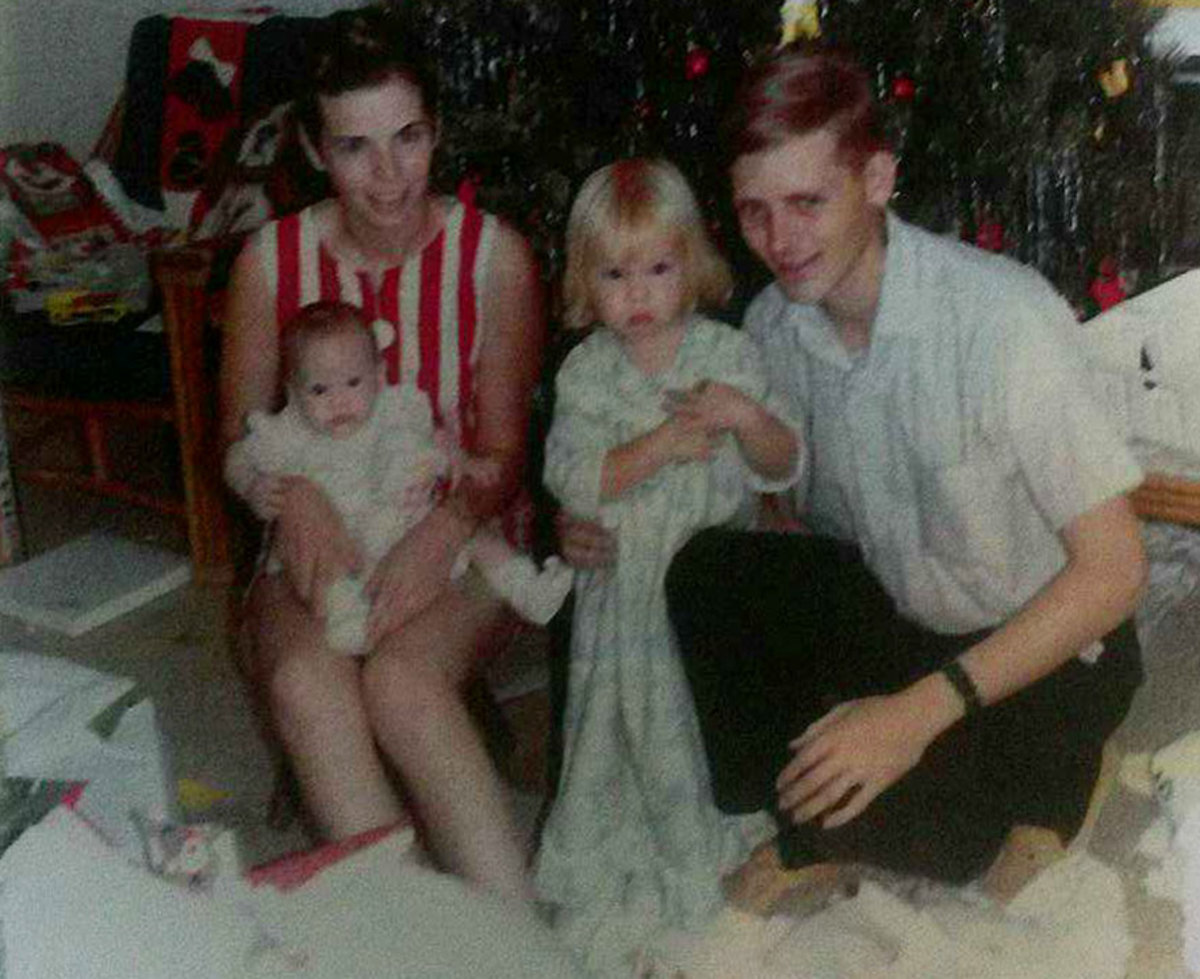
Every year Rusch’s main sponsor, Red Bull, asks her if she has any ideas for expeditions or projects she’d like to pursue. She suggested Crossing the Aral Sea and Riding North America’s Continental Divide, but Red Bull passed on them all. After Steve’s teeth were found, she had a new pitch: Ride the Ho Chi Minh Trail, and find my father.
Rusch left Hanoi on Feb. 2, 2015, on a tear. The journey wasn’t formally a race—there was no podium waiting for her in Ho Chi Minh City—but Rusch still felt the pressure of the clock. She was desperate to reach her father’s crash site, midway along the route, on the anniversary of the day he had disappeared.
As part of her deal with Red Bull, part of the drama of the documentary, Rusch rode with a teammate she had never met before, Nguyen Huyen, a Vietnamese cross-country mountain bike racer. That broke a cardinal rule of competition: Don’t try anything new on race day. Rusch had brought her trusted crew, her husband, Greg Martin, and her long time mechanic, Jason Bauer, but she didn’t know if she could count on Nguyen.
Rusch never beat opponents on raw speed; she would break them. When others pulled over to rest, struggling with fatigue, she would just keep going. She earned a reputation as the Queen of Pain. When the adventure racing scene died down in the mid-2000s, she switched to endurance mountain biking. In her first race, a 24-hour mountain bike race near Spokane, Wash., in 2006, she beat everyone, pros, amateurs, men and women. Compared to a seven-day, cross-country, multi-discipline adventure race, missing just one night’s sleep on a bike was easy. She would go on to win the grueling Leadville 100 mountain bike race four times straight, from 2009 to ’12, and the Dirty Kanza 200 gravel bike race three times in a row, from 2012 to ’14.
Rusch and Nguyen raced along paved roads through Vietnam, then crossed the border into Laos. In front of them lay the best mountain bike trails Rusch had ever ridden, sweeping single tracks that flowed through the hillsides then dropped down rocky slopes to the streams that cut across the landscape. Rusch was sure Nguyen would quit. Nguyen had never camped out in the jungle, let alone spent days in the wilderness. If she has to drop out, I’m going to finish, Rusch thought. No matter what. If she’s got to bail, OK.
In a way, Rusch was the one who cracked. Laos refused to comply with her Western mentality. Instead of flashing past in a blur, she would have to stop and sit in a circle with village elders, asking permission to use a trail, or pass through a cave. Rusch and her crew brought gifts with them to hand out along the way. In one village, she says, “we gave away packets of socks.” But the locals were all barefoot. The socks sat untouched on a table as the visitors left. “What do they think of us?” she asks. “We brought them socks. White sweat socks.”
“I had to adapt,” Rusch says. “If I really wanted to achieve my goal, I had to play by the Laos rules, and not Rebecca’s rules.”
“The harder you try sometimes, the less successful you are.”
“Bomb crater after bomb crater after bomb crater. We annihilated the place.”
The area where the North Vietnamese Army’s supply route ran through central Laos is a landscape of leafy valleys bordered by domed limestone mountains. Palm trees and huts on stilts ring fishing pools. Rocky paths weave through the terrain, villagers cross rivers in aluminum boats. Children run barefoot and play in grassy clearings. In a country where the average life expectancy at birth in 1973 was just 47 years, few locals today have memories of the American War.
But the scars on the land run deep. Those limestone peaks were eroded not by time, but by bombs, the rubble repurposed to form cobbled roads to transport troops and supplies. Every fishing pond, and they are numerous, was once a bomb crater. Boats and tools are made out of metal reclaimed from the war junkyard. Cluster bomb casings that once held hundreds of bomblets have become fence panels or planters for green onions. And children are warned to stay away from the baseball-sized metal objects that the rains occasionally flush out of the thick clay. The Trail was once called “The Blood Road” because of the number of people who died on it. Exact casualty figures for the Trail are hard to track down, but the USAF estimates that in 1971 alone, bombing destroyed 6,000 North Vietnamese trucks—89% of the total traversing the road that year. More than 10,000 North Vietnamese soldiers, many who died on the Trail, are buried at Truong Son, Vietnam’s largest cemetery.
“The impact of seeing the scars of war up close was something I didn’t anticipate,” Martin says. “Bomb crater after bomb crater after bomb crater. We annihilated the place.”
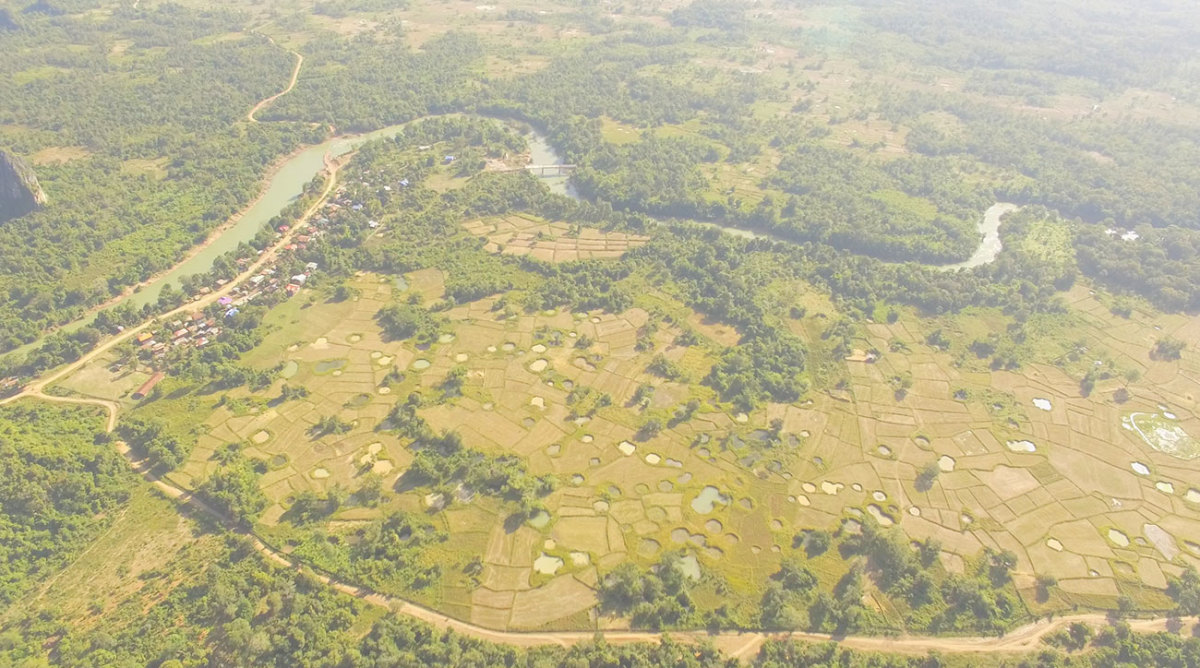
The land is like a verdant moonscape, craters overlap craters beneath the tangled foliage.
“Crash sites are grown over and they’re really hard to find,” Rusch says, her voice tinged with tension and sadness. Since her father’s site was stripped and excavated, it has disappeared beneath the thick forest. “It makes it really hard for them to actually find the remains. They’re still looking for people because the jungle absorbs those, but the bomb craters…they won’t ever go away.”
Paddy fields are roped off with red skull-and-crossbones warnings erected by the Mines Advisory Group (MAG), an international organization working to clean up the world’s warzones. THIS AREA IS CURRENTLY BEING CLEARED OF UNEXPLODED ORDNANCE (UXO) BY MAG LAOS. DO NOT ENTER. “You don’t really know if you disturb [a bomb] you could actually enable a timed fuse,” says Don Duvall, 62, an American ex-sailor who has spent the last eight years in Laos, mapping the Trail by dirt bike. Able to switch between English and Lao, Duvall worked as Rusch’s guide. “If you dig it up and you carry it home and it seems inert,” he says, “[perhaps] you’ve set off a timed fuse and in three hours that thing sitting on your kitchen table explodes.” Locals collect scrap from the war beneath their houses because metal is valuable.
Unlike in Cambodia to the South, where the biggest problem is antipersonnel landmines specifically designed to lay dormant until disturbed, the unexploded bombs in Laos may simply be faulty. “If you leave that thing alone,” Duvall says, “or if you just run over it with your motorcycle, it probably will never ever do anything.”
But that doesn’t make them safe. According to MAG, 300 people are injured every year by UXO in Laos, including 120 children. Last September, President Obama committed the U.S. to spending $30 million annually over the next three years to help remove the 80 million unexploded cluster bomblets scattered throughout the country. “That conflict was another reminder that, whatever the cause, whatever our intentions, war inflicts a wrenching toll, especially on innocent men, women and children,” he said then, calling for reconciliation. Out in the countryside, occasional rumbles of thunder in the distance mark controlled explosions of UXO.
“Imagine their day, every day for 10 years is that noise, one second after another,” Rusch says. Laos holds the unwanted honor of having been the most bombed country per capita in history. To survive, many Laotians sheltered for years in damp limestone caves. “I don’t know how you could live. I don’t know how you could survive and not just go completely insane.”
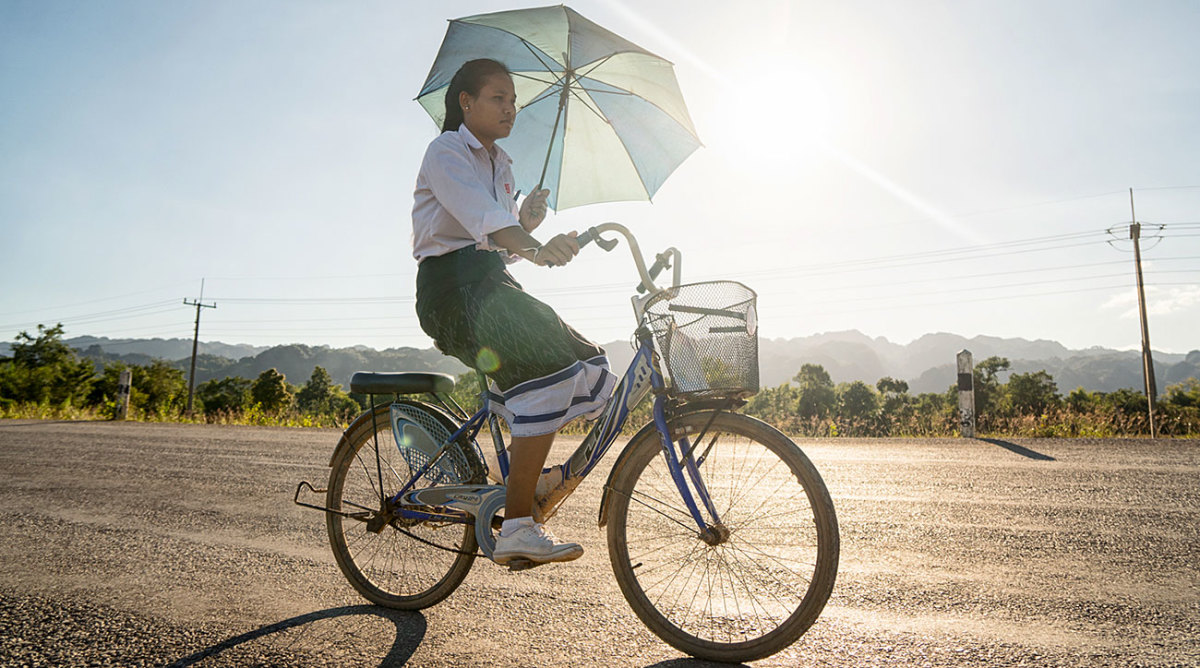
Last November, a year-and-a-half after her month-long journey had ended in Ho Chi Minh City, Rusch was back in the jungles of Laos. This time she’d brought a dozen riding companions. She invited Sports Illustrated along for the ride too. (Niner Bikes, one of Rusch’s sponsors, provided SI with a discounted bicycle for this journey.)
After her first trip, back at home in Ketchum, Id., Rusch had puzzled over her goals, trying to find purpose in her pro-athlete career. What else do you want to win? she asked herself. What does that mean if you win Leadville a fifth time? Instead, she knew she had to go back to Laos.
“I feel like it’s important to tell the story, it’s the only thing I know how to do,” Rusch says, hopeful that she can raise awareness of the UXO problem that still exists in Laos. She asked each rider to contribute towards helping MAG, collecting close to $3,000, enough to fund a bomb disposal worker for six months. She told her story in a TEDx talk in Sun Valley, Idaho, in November, and she held another event there in January that raised $1,500. Two screenings of Blood Road in Emporia, Kan., at the beginning of this month collected another $5,500, and she hopes to raise more through donations online. “I don’t have a lot of money to donate,” she says. “I can give them food along the way, but the bigger picture is I can help clean up their home.”
Rusch hopes that talking about her experiences might help heal the scars stateside, too. “I need to tell that story for people who don’t get to do it like I did,” she says. “All the soldiers who are still missing and the families who are still wondering.” On the first trip, when grabbing coffee in a town along the route, Martin was given pictures taken by a local of the bodies of American personnel hidden in a cave. The local wished to remain anonymous, wary of drawing the attention of either the U.S. or Laotian governments. Those bodies may never be recovered.
"On the trail, there's life along with death. You see recovery."
In Laos there seems to be little animosity over what happened half a century ago. “It just doesn’t feel like this culture holds a grudge,” Bauer says. Contrast that with American feelings over the Vietnam War. Rakestraw, who retired from the Air Force as a colonel in 1992, had never talked about the war with his own children until he got a call from Bannister in 2016. “It was one of those things I just wanted to leave behind,” he says. Steve had been a friend. They’d played guitar together at Da Nang Air Base. Steve’s plane was one of half a dozen Rakestraw had witnessed shot out of the sky. When he came home, Rakestraw didn’t know how to reach out to the families of friends he’d lost, or what he’d have said to them if he did.
Most U.S. veterans remember only what Southeast Asia was like in wartime. Midway through her most recent ride, Rusch took her group to see a museum built to commemorate victory by joint North Vietnamese–Laotian forces in a battle for control of the Route 9 highway that connects Vietnam to Laos. In front was a collection of American and Vietnamese war machines, including the wreckage of a U.S. T-28 fighter plane. Rusch broke off from the group, and stood staring solemnly at a 37 mm anti-aircraft gun.
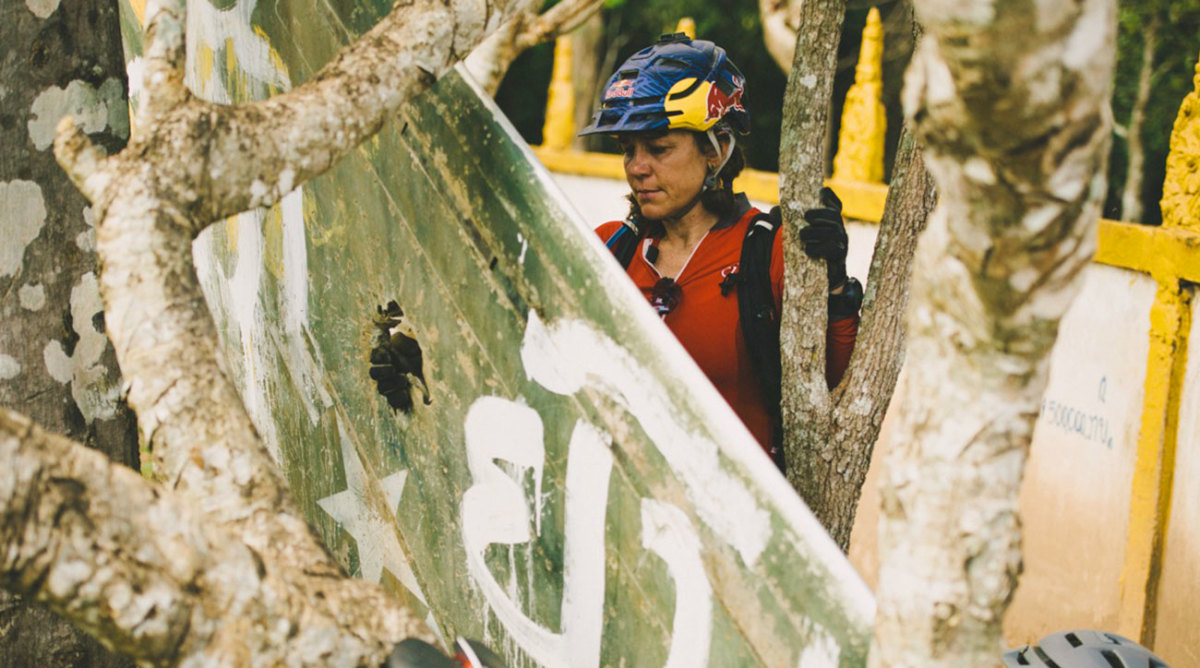
“When you see the bombs, and the things in the villages, it’s like they’re being used. They’re sort of being repurposed. There’s life going on and that museum was just pictures of death, pictures of destruction,” she said afterwards. “On the trail there’s life along with death. You see recovery.”
Rusch’s most recent journey through Laos came to an end on Nov. 20 in Pakse. In the gathering dusk of a bustling city, she and her fellow riders disassembled and packed up their bikes for the long journey home to the U.S. “I never would have come here if it weren’t for him,” Rusch says of her dad.
She opened up her laptop and hit play, her father’s voice echoing out from the past. ‘I can't help but wonder where I'm bound, where I'm bound. Can't help but wonder where I'm bound.’
